EV4, Concept EV2 and PV5: Kia gives an outlook on its electric future
In the passenger car segment, Kia wants to do nothing less than “complete the brand’s core EV lineup” with the EV4, which was already unveiled, and the preview of the upcoming EV2 model. From the small EV2 to the EV3 compact crossover, the new EV4 saloon, the EV5 mid-size SUV in some markets and the two well-known 800-volt EV6 electric vehicles, right up to the large EV9, Kia wants to cover all customer requirements – roughly speaking, from four to five metres in length.
Let’s first look at the EV4, which Kia describes as “versatile and practical.” As revealed at the design presentation a few days ago, the model comes as a saloon (four-door) and hatchback model, also referred to as the five-door model. The EV premiered as a study at the Kia EV Day 2023 in Seoul, and the final design was revealed a few days ago, but the carmaker had yet to provide any data on the powertrain.
Kia has now done so, albeit with no major surprises. The EV4 is closely related to the EV3, so it also uses the 400-volt version of the all-electric E-GMP platform. There are two battery versions. The standard range model has 58.3 kWh installed in the underbody. In comparison, the long-range model has a battery pack with an energy content of 81.4 kWh- Hyundai-Kia only provides gross figures; the net energy content is generally not communicated. The EV4 Long Range can go up to 630 kilometres on one charge, according to WLTP. That makes sense since the less aerodynamic EV3 has a range of 605 kilometres. What is surprising, however, is that Kia only states a range of 430 kilometres for the standard range battery, although the EV3 with this battery is certified with 436 kilometres. Incidentally, these ranges apply to the saloon; the five-door model should be able to travel 410 and 590 kilometres, respectively.
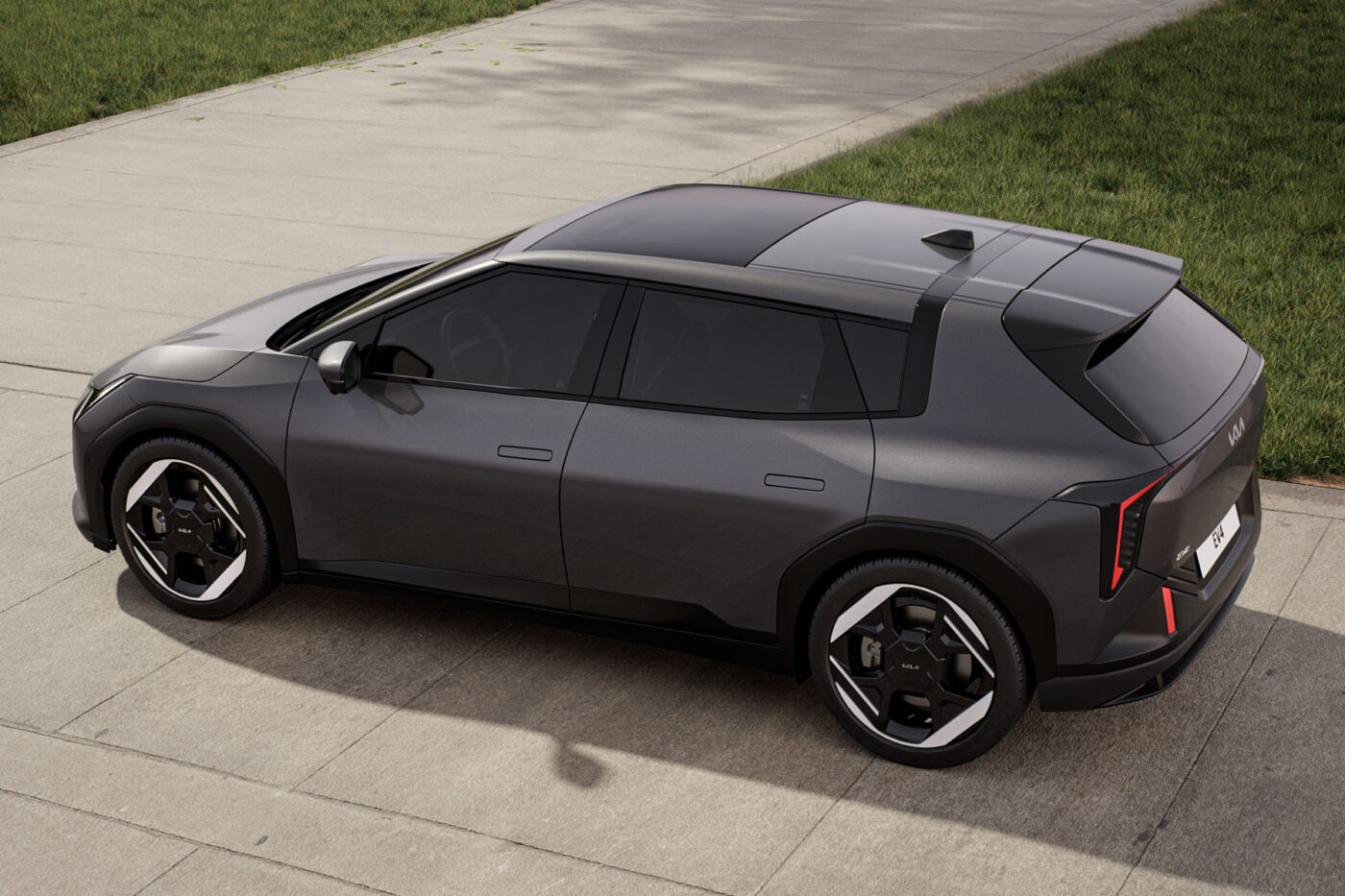
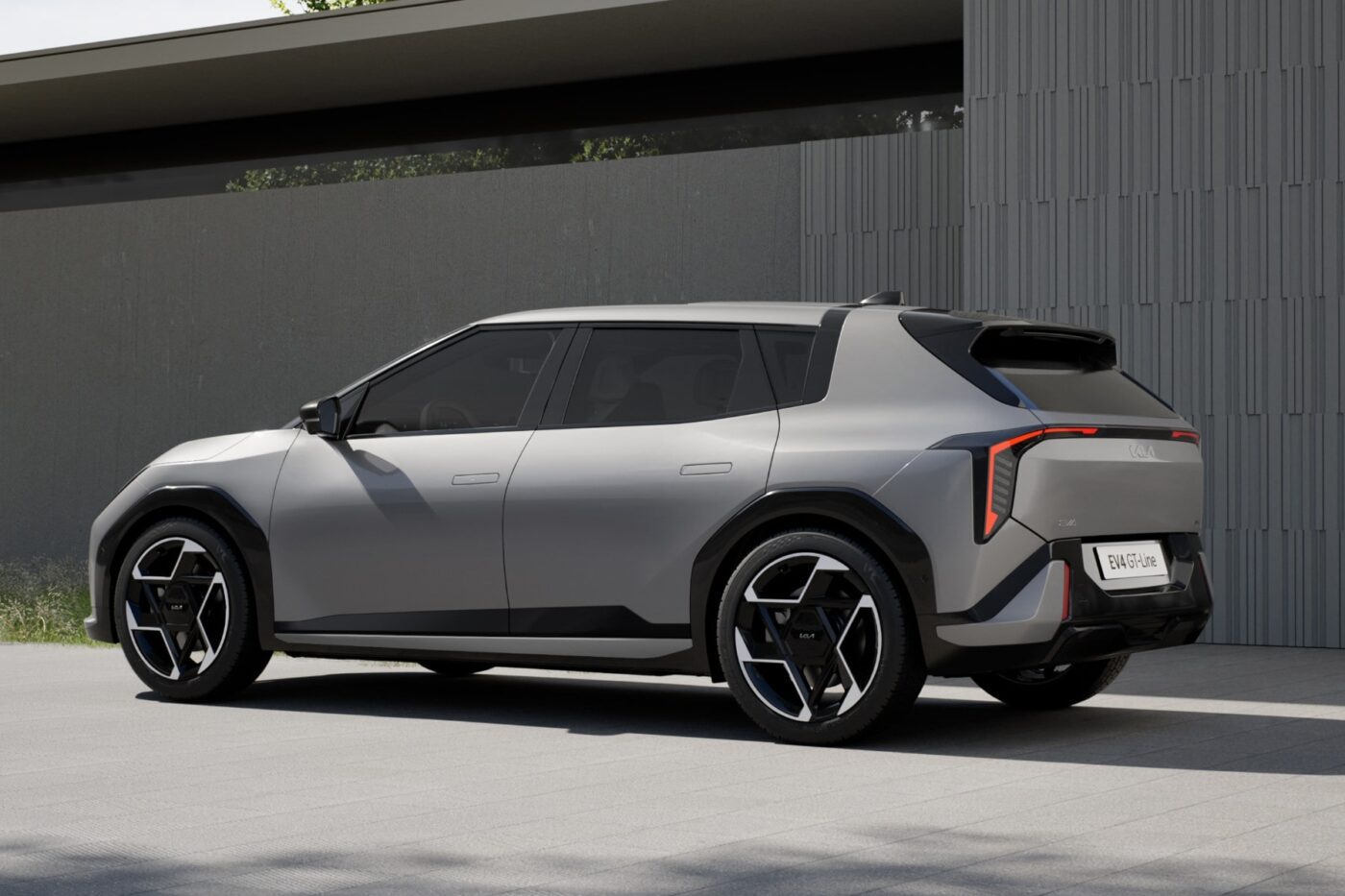
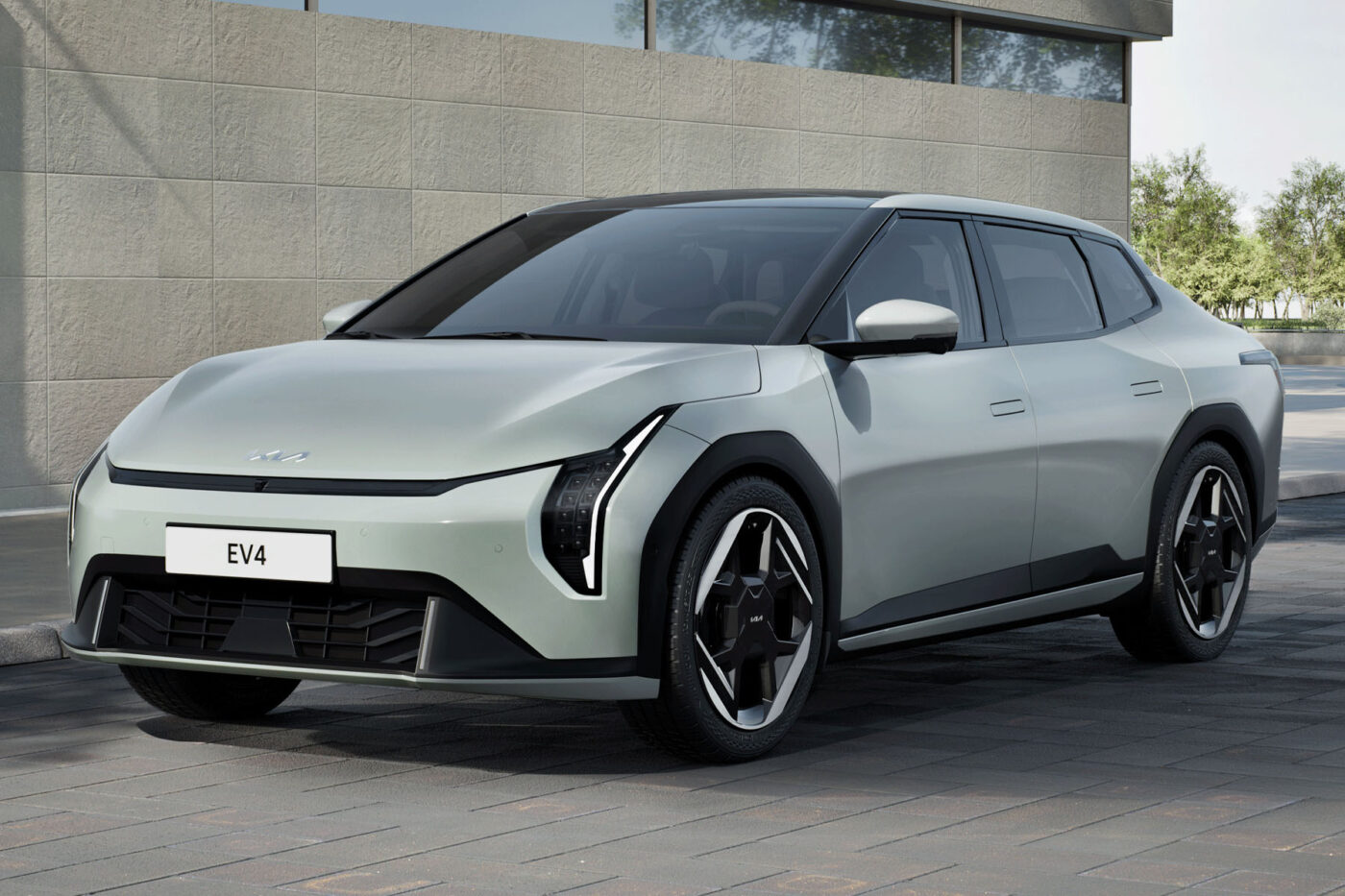
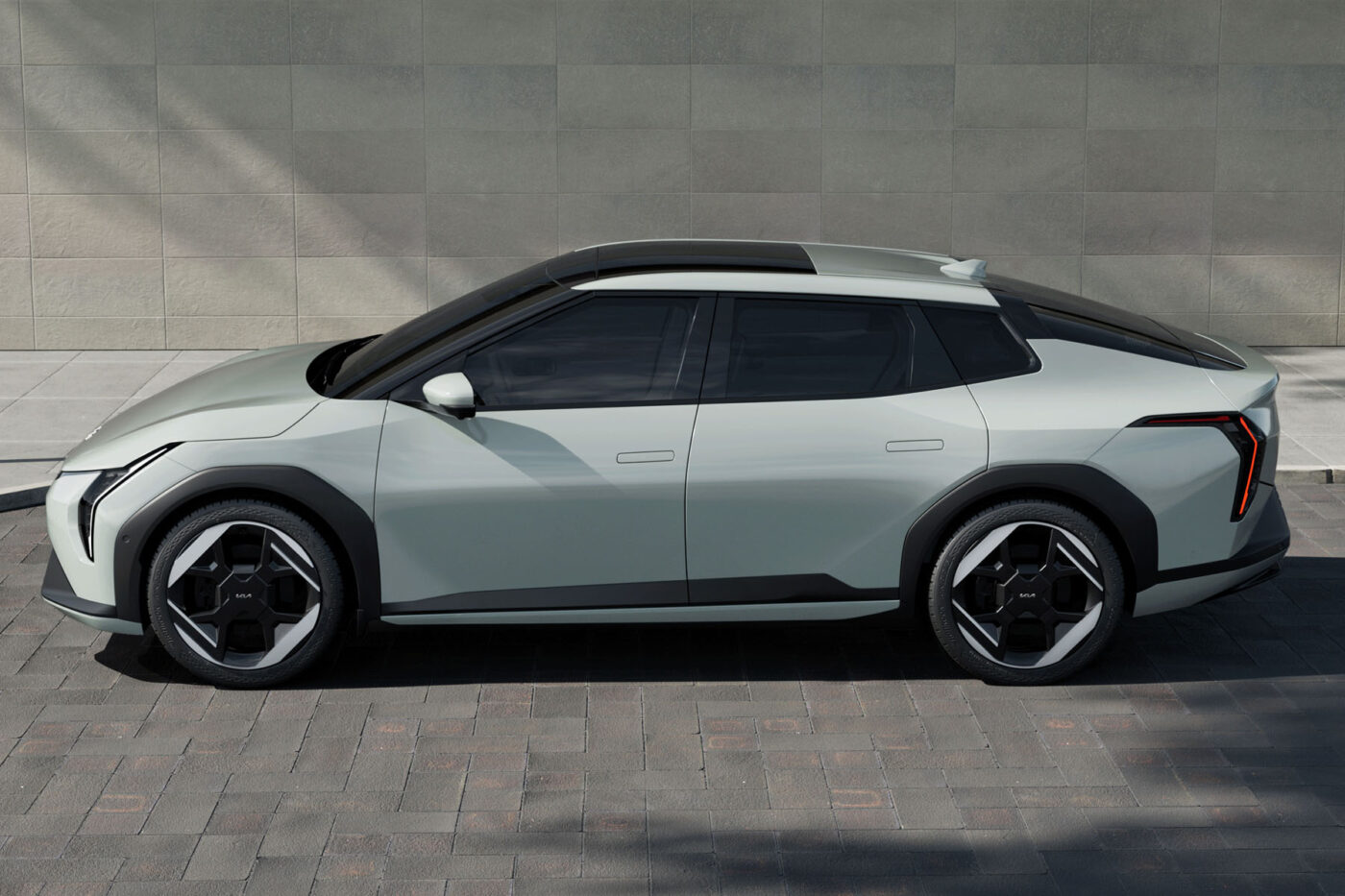
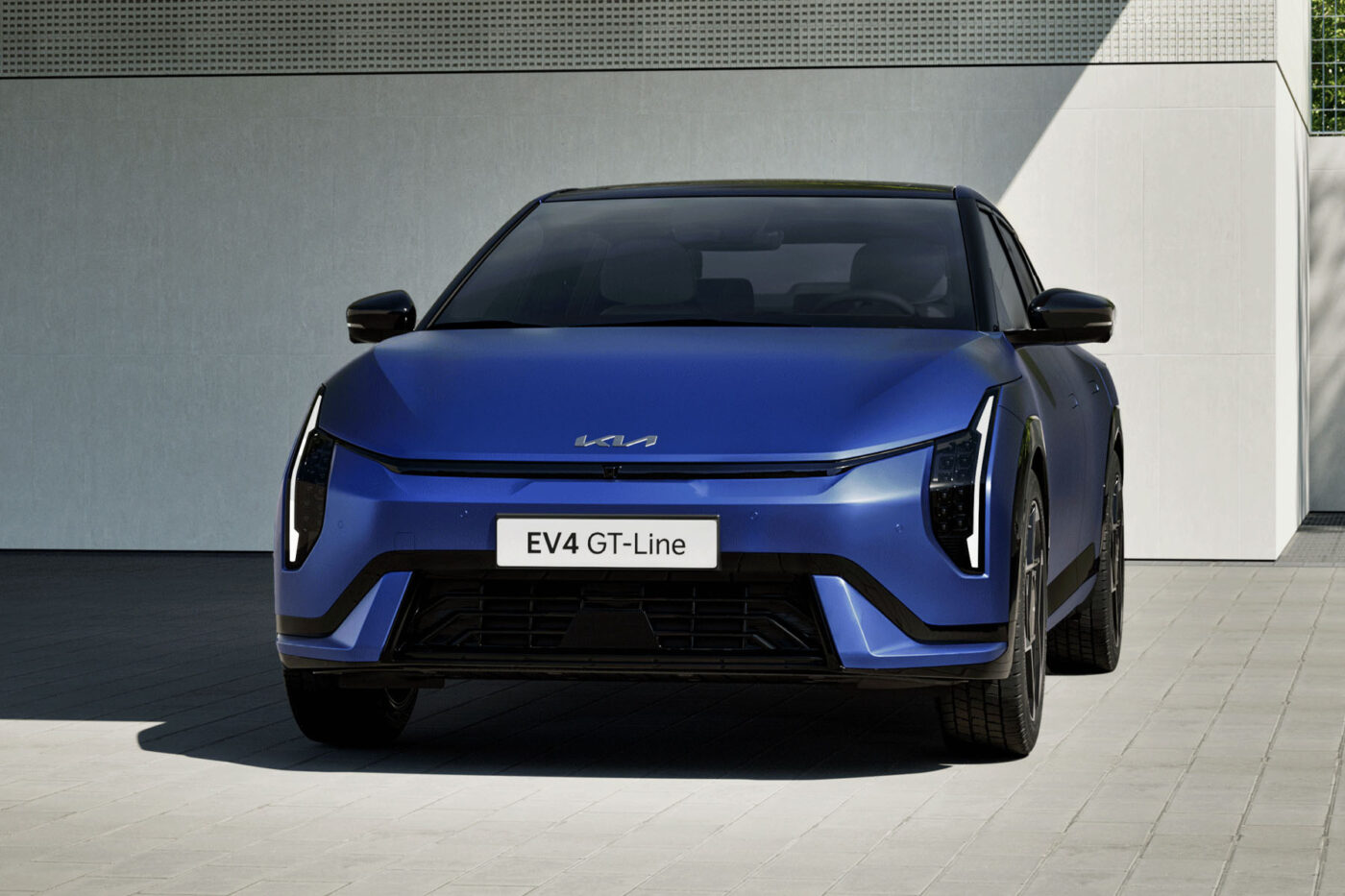
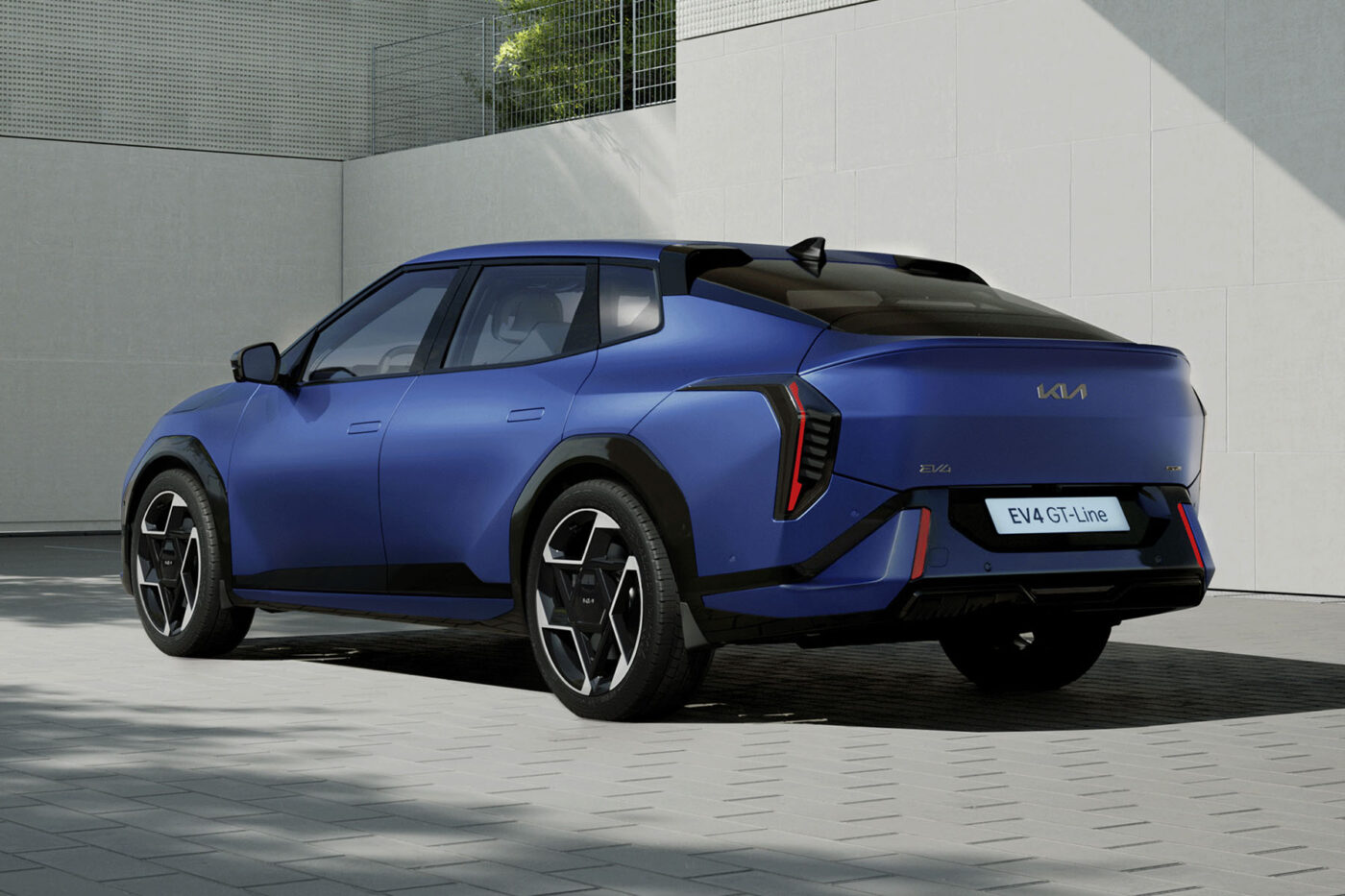
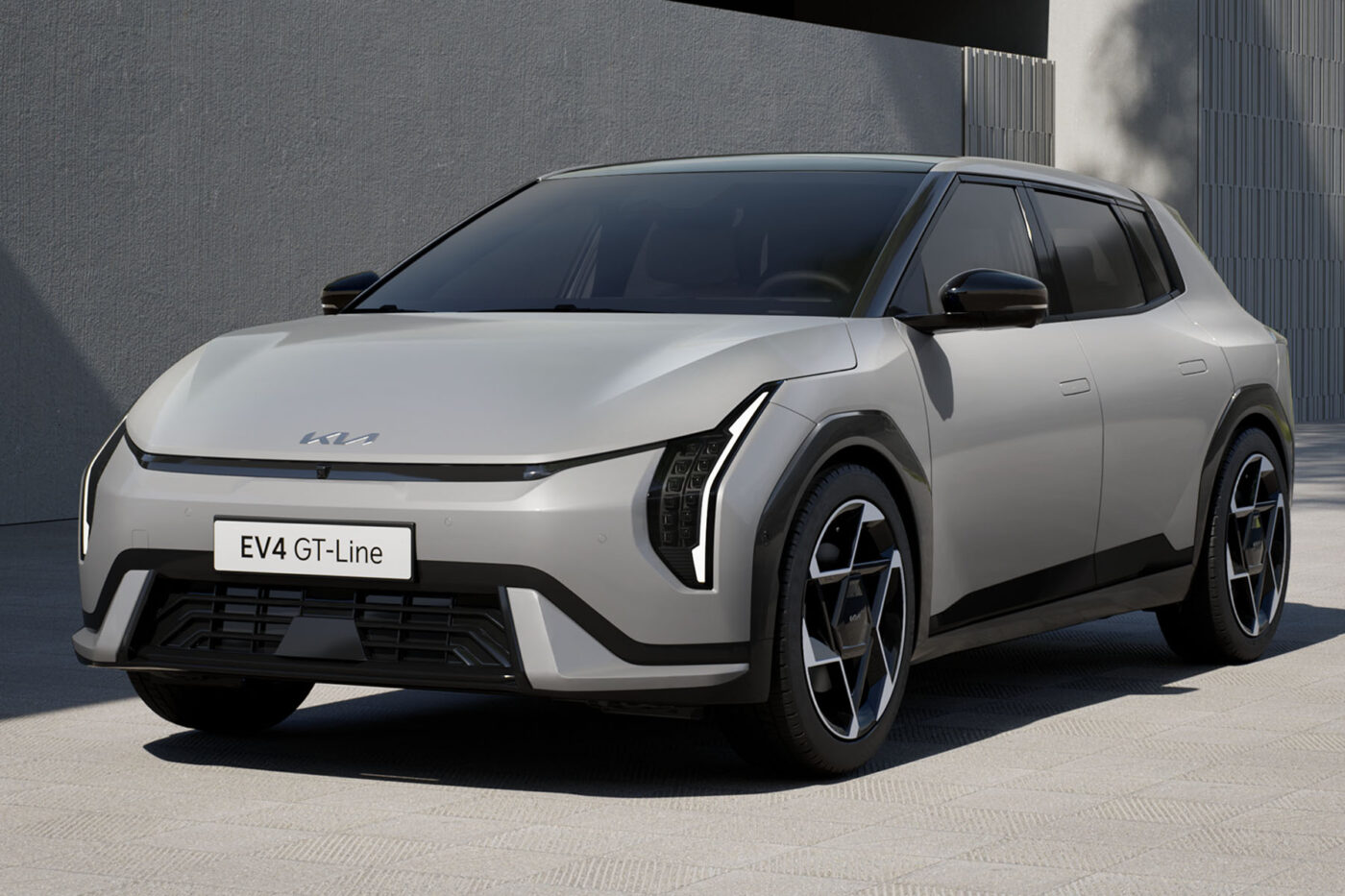
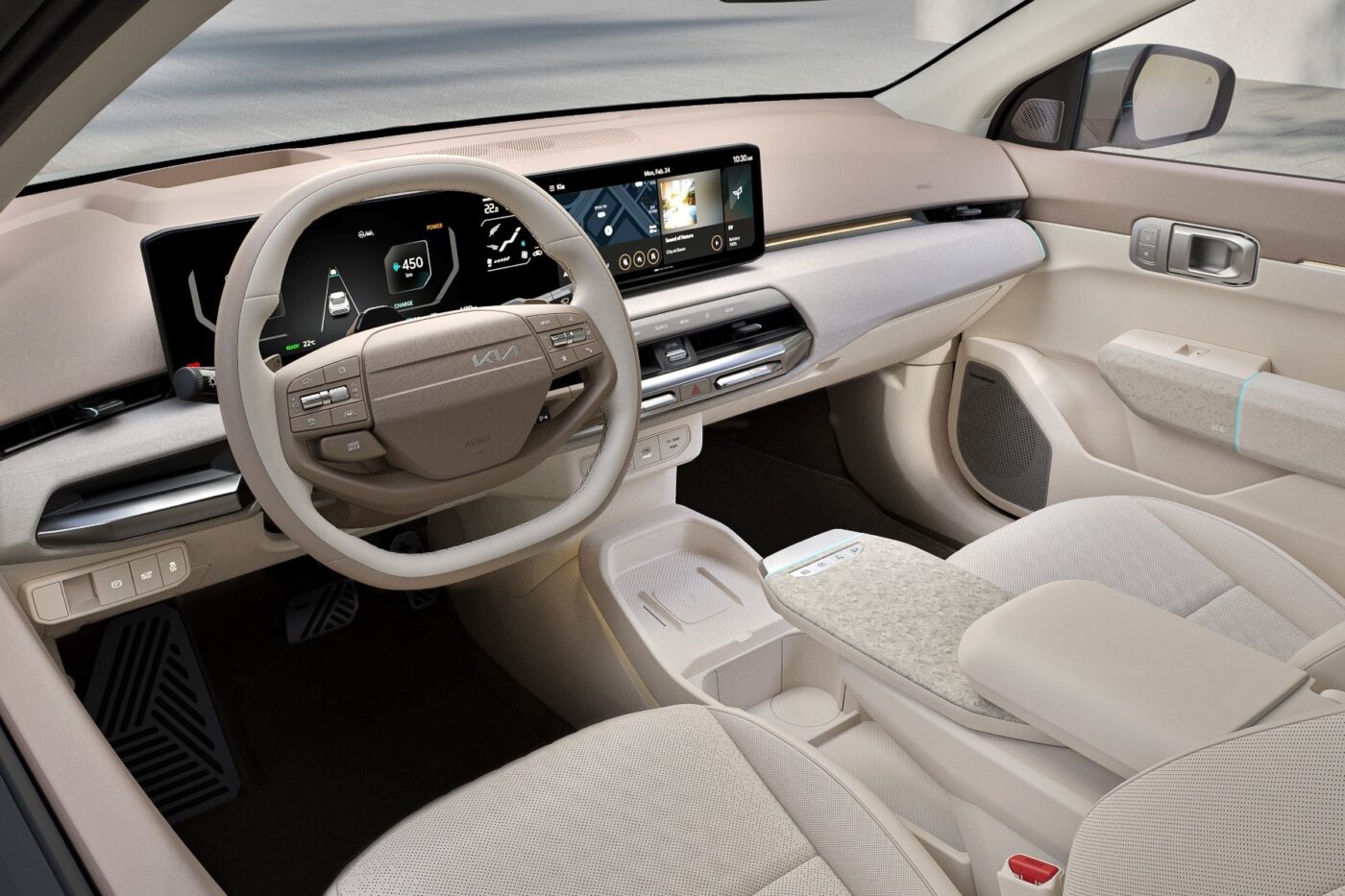
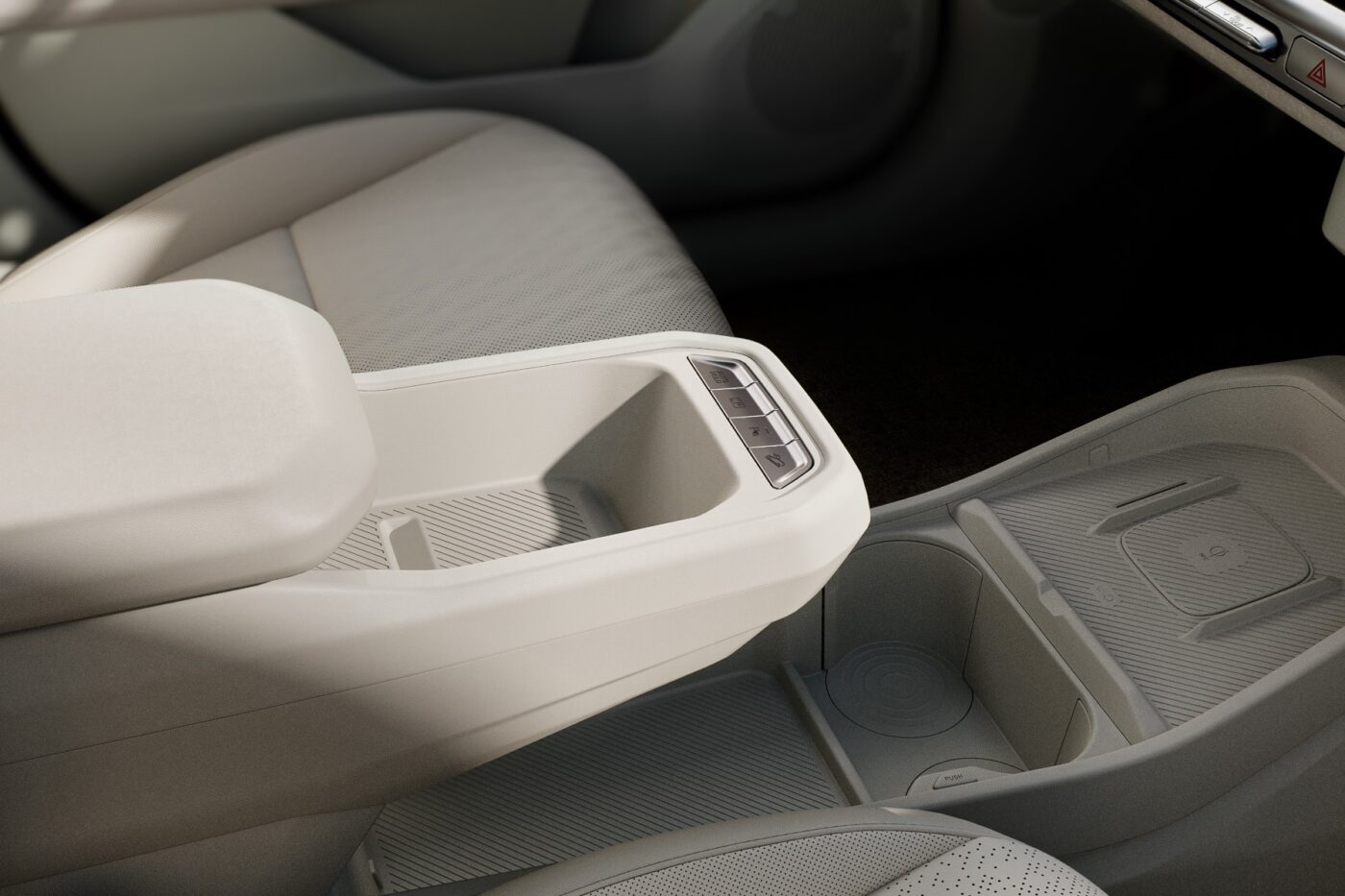
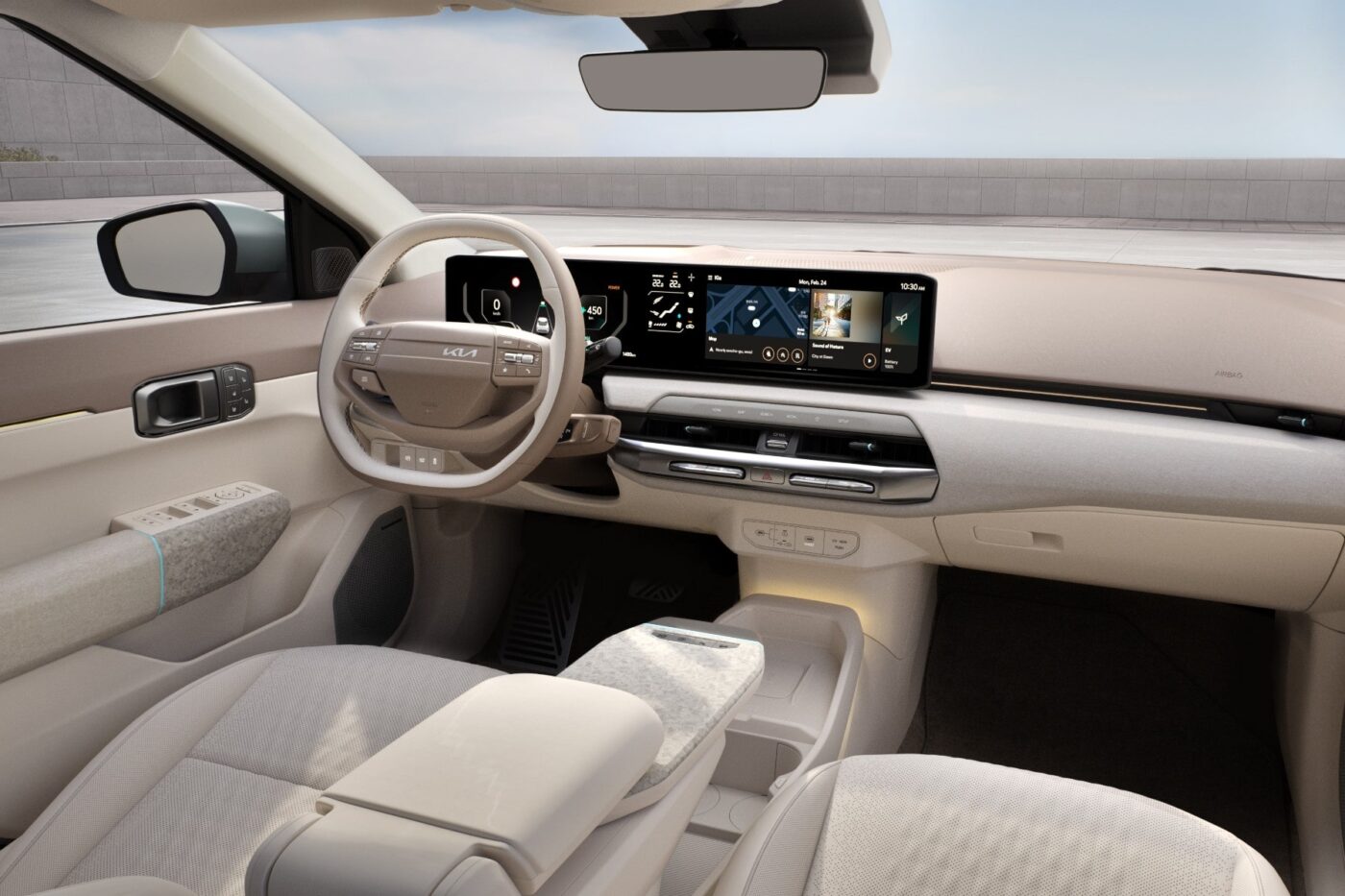
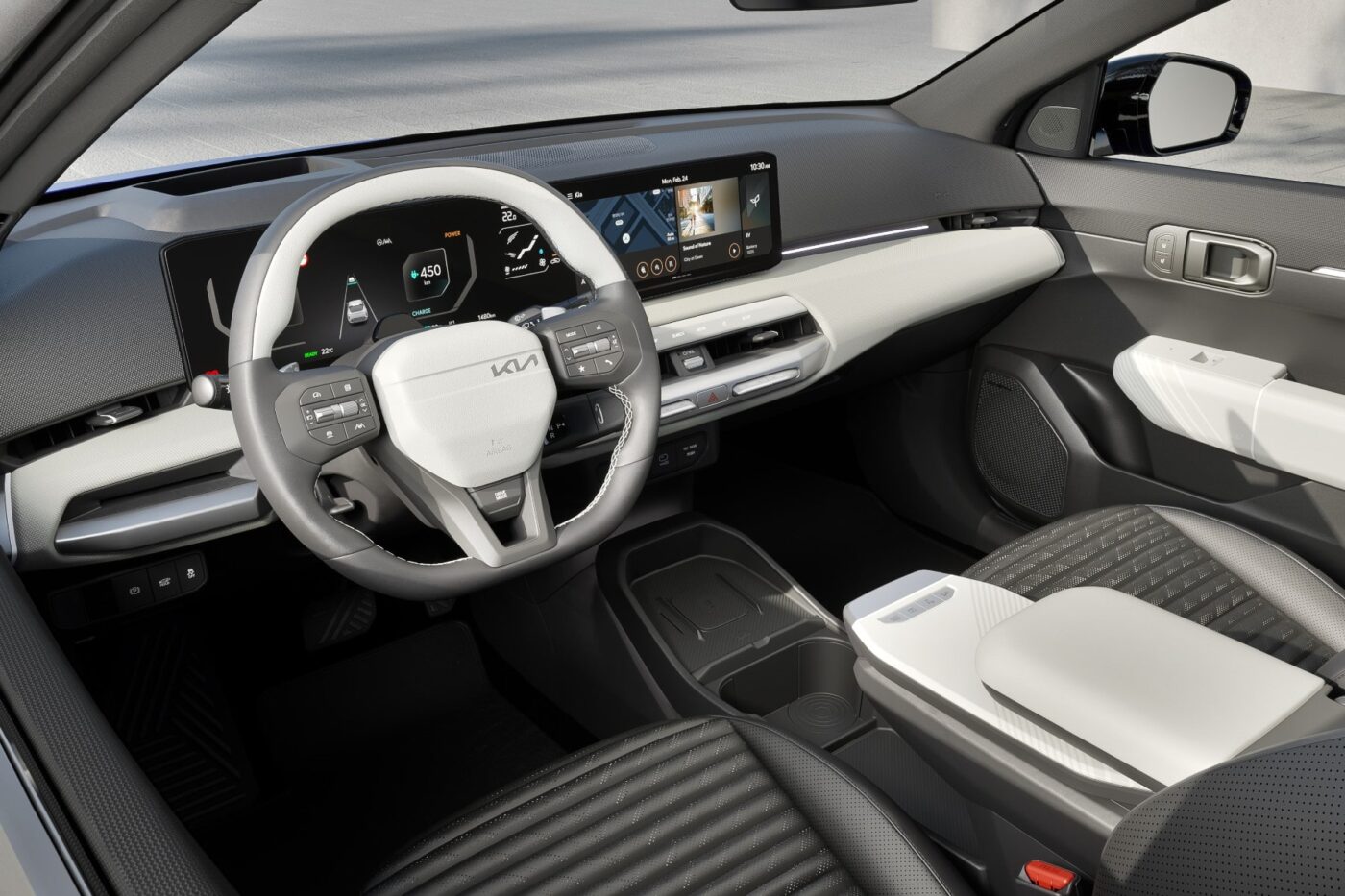
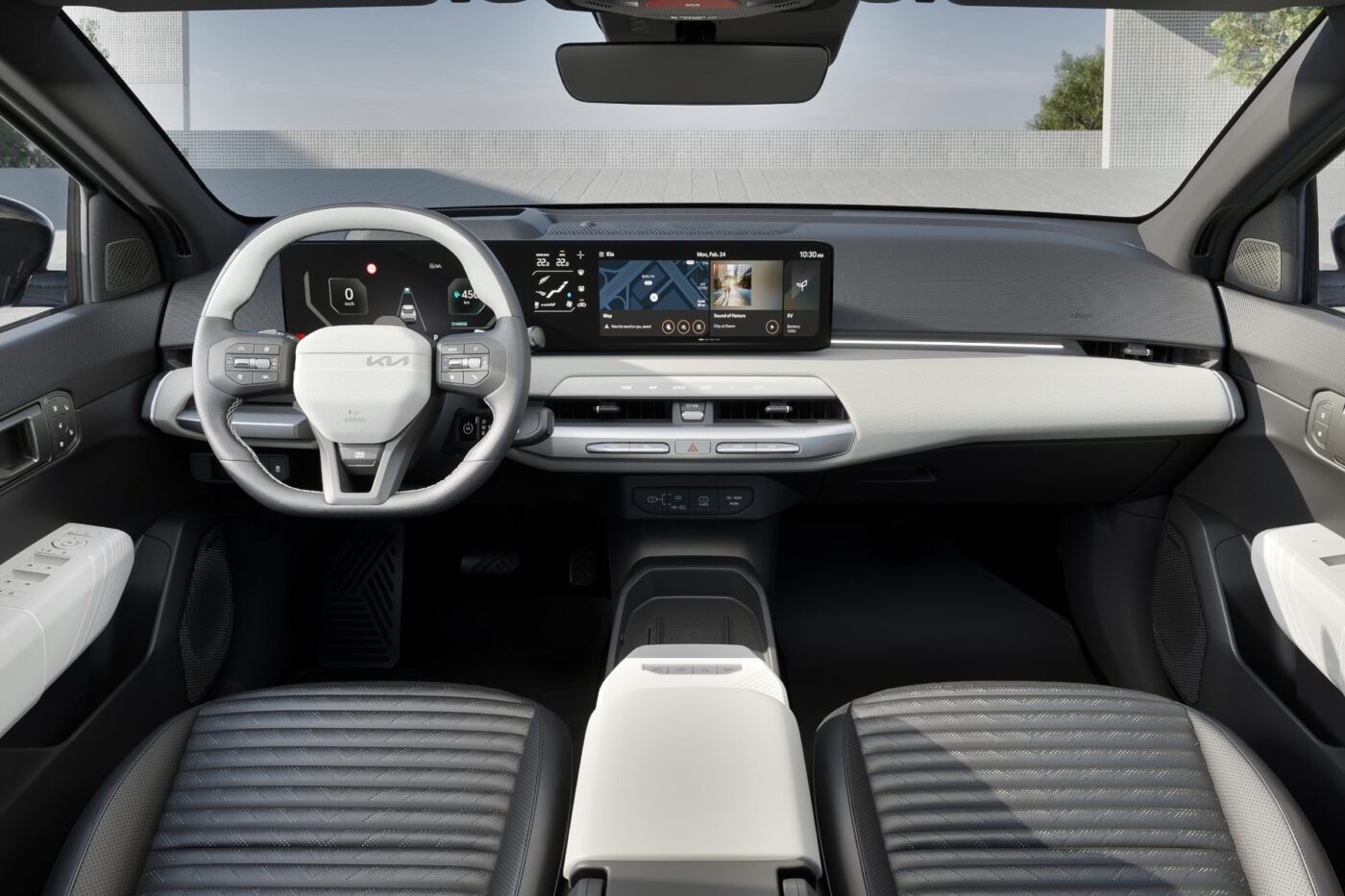
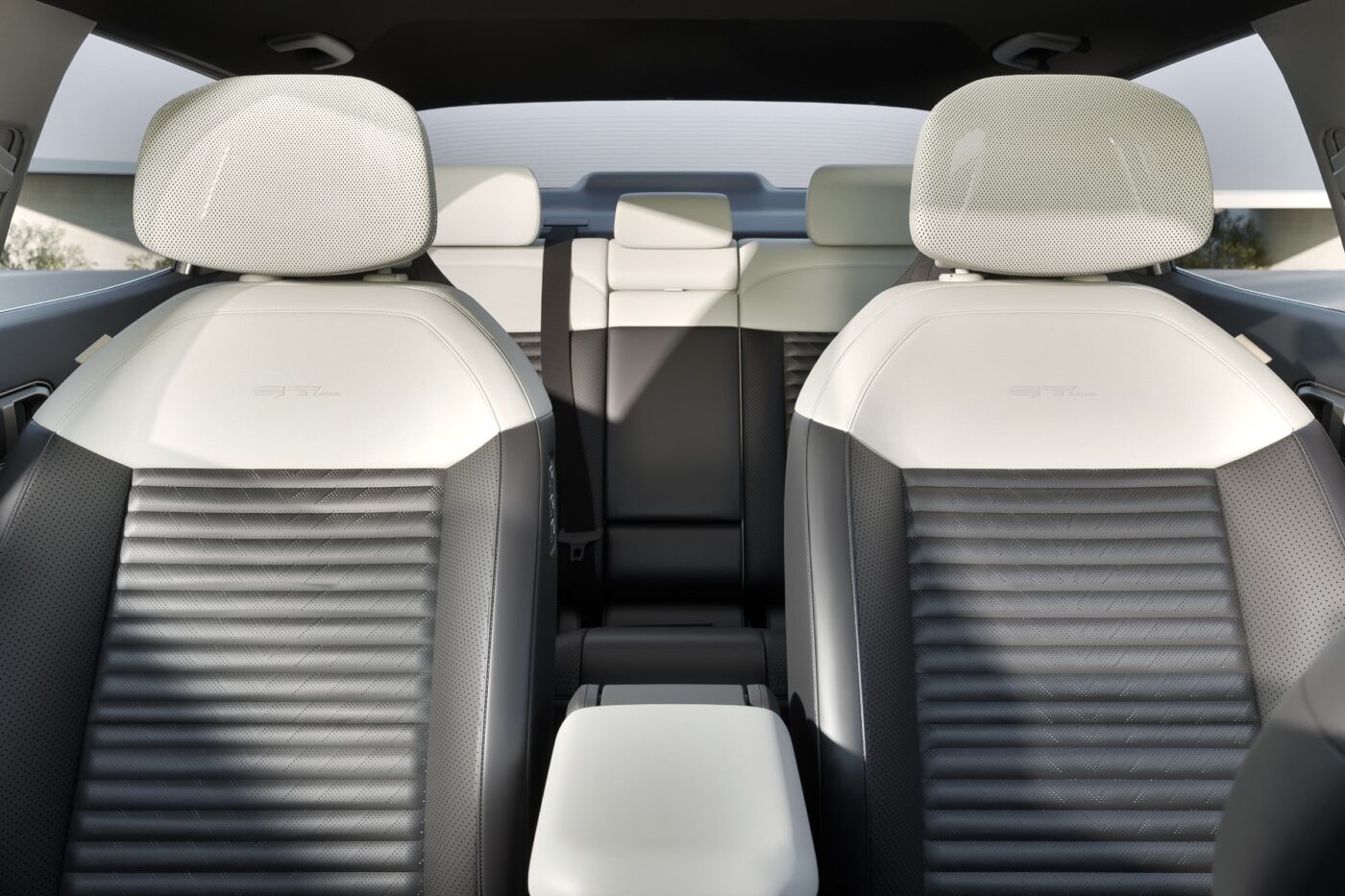
The EV3’s charging performance is also known. The large battery can officially be charged with a peak of 128 kW, which results in a charging time of 31 minutes for the standard charging process from 10 to 80 per cent – in our test of the EV3, we even achieved more than 130 kW. The small battery is specified with 101 kW peak charging power; here, it takes 29 minutes until the battery is 80 per cent charged. An 11 kW onboard charger is installed for AC charging, which also supports vehicle-to-load with up to 3.6 kW and should also be vehicle-to-grid-capable. Up to 10 kW of power should be possible here.
Independently of the battery, the EV4 has the familiar 150 kW electric motor mounted on the front axle. It is a permanent magnet synchronous motor (PSM) with a torque of 283 Nm. As the battery in the standard-range model is slightly lighter, this variant can accelerate from a standstill to 100 kph in 7.4 seconds, slightly faster than the long-range model (7.7 seconds). The top speed is the same in both cases at 170 kph.
| EV4 Standard Range | EV4 Long Range | |
|---|---|---|
| Drive | FWD | FWD |
| Power | 150 kW | 150 kW |
| Torque | 283 Nm | 283 Nm |
| Acceleration | 7.4 s | 7.7 s |
| Top speed | 170 kph | 170 kph |
| WLTP range | 410/430 km | 590/630 km |
| Battery | 58.3 kWh | 81.4 kWh |
| Charging capacity DC | 101 kW | 128 kW |
| Charging time DC 10-80% | 29 min | 31 min |
| Price | – | – |
Kia has also communicated the exact dimensions, which were previously unknown. The width of 1.86 metres and the wheelbase of 2.82 metres (14 centimetres more than the EV3) are the same for both versions. However, the saloon with the stretched rear is 4.73 metres long and 1.48 metres high. The hatchback version is significantly shorter at the rear and is specified at 4.43 metres – a full 30 centimetres difference. At 1.485 metres, the five-door version is also slightly higher. The considerable difference in length means that the saloon’s boot, at 490 litres according to the VDA standard, is a good deal larger than that of the five-door model (435 litres). However, with the rear seat folded down, the five-door could offer more space than the flatter saloon – Kia has not yet provided any figures on this nor the towing capacity.
However, there are details about the production schedule: the four-door model will be built in Gwangmyeong in South Korea, with the start of production (SoP) set for mid-March. The hatchback model is primarily aimed at the European market and – as rumours have suggested for some time – will be built at Kia’s European plant in Slovakia. Production in Zilina is scheduled to start in the second half of the year. Production for North America and other regions is “planned for later in the year,” according to Kia.
Series EV2 to arrive in 2026
There is no word yet on the start of production for the Concept EV2, but there is information about the market launch. Although Kia only presented the concept car at the event in Tarragona, Spain, the EV2 is set to launch “in Europe and other regions” as early as 2026.
The EV2 will be an all-electric SUV in the B-segment; Kia has not yet revealed its dimensions. Given the 4.31 metres of the EV3, the EV2 is likely to be around four metres – typical of the small car segment. As an SUV, it is expected to compete with the VW ID.2 X and the Skoda Epiq, which are being developed by the VW Group as €25,000 electric vehicles – but will probably not launch until 2027.
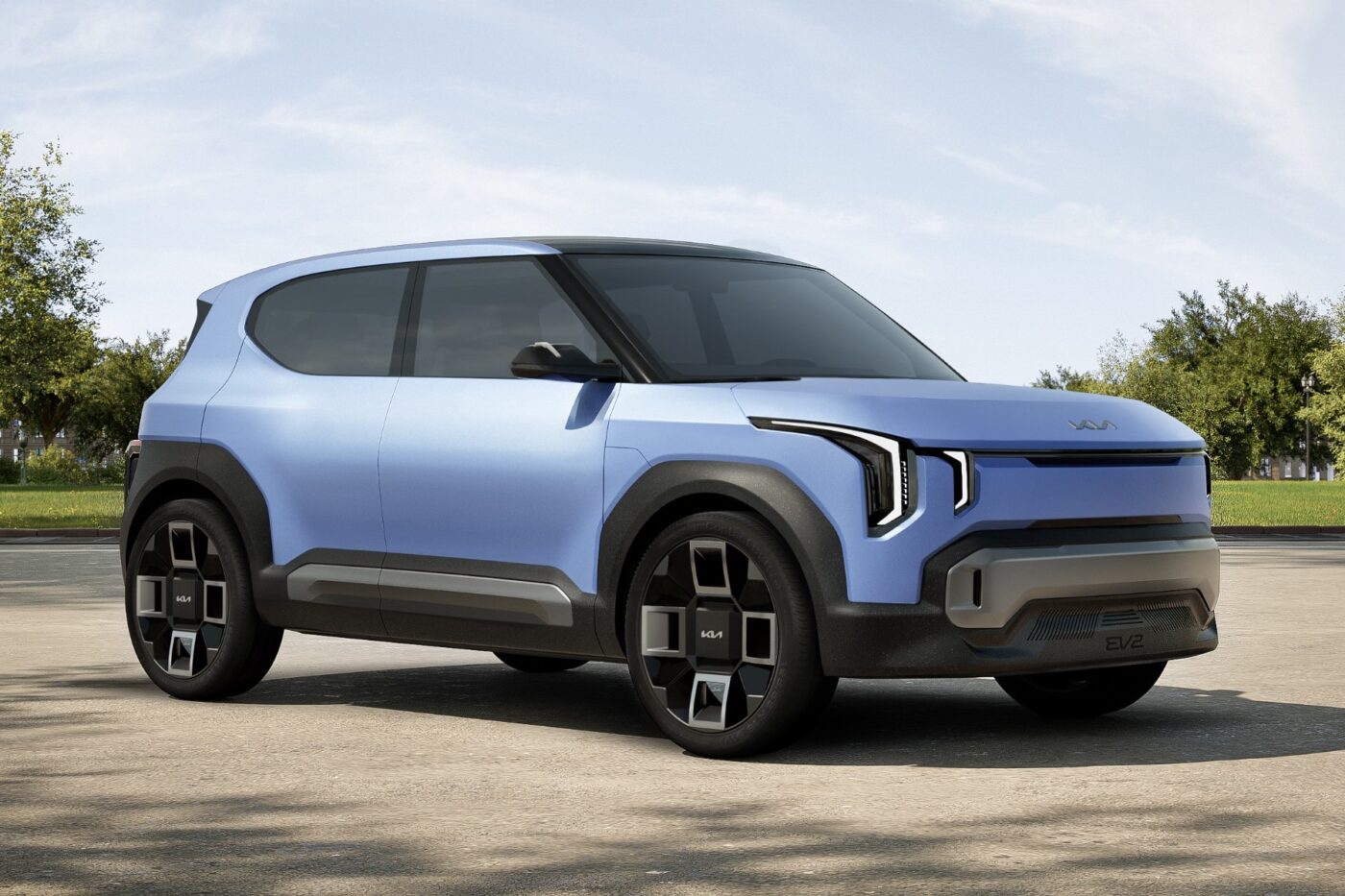
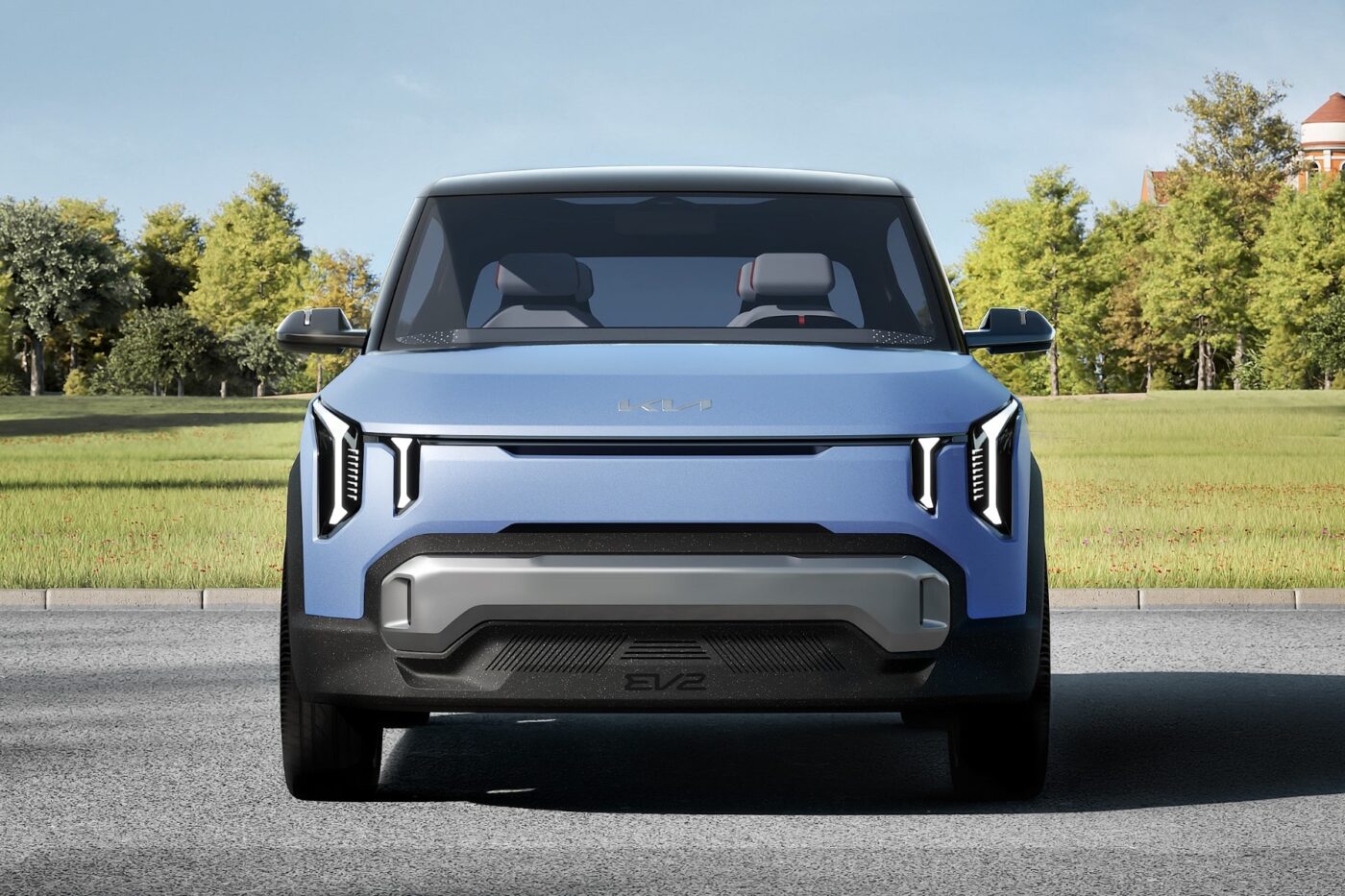
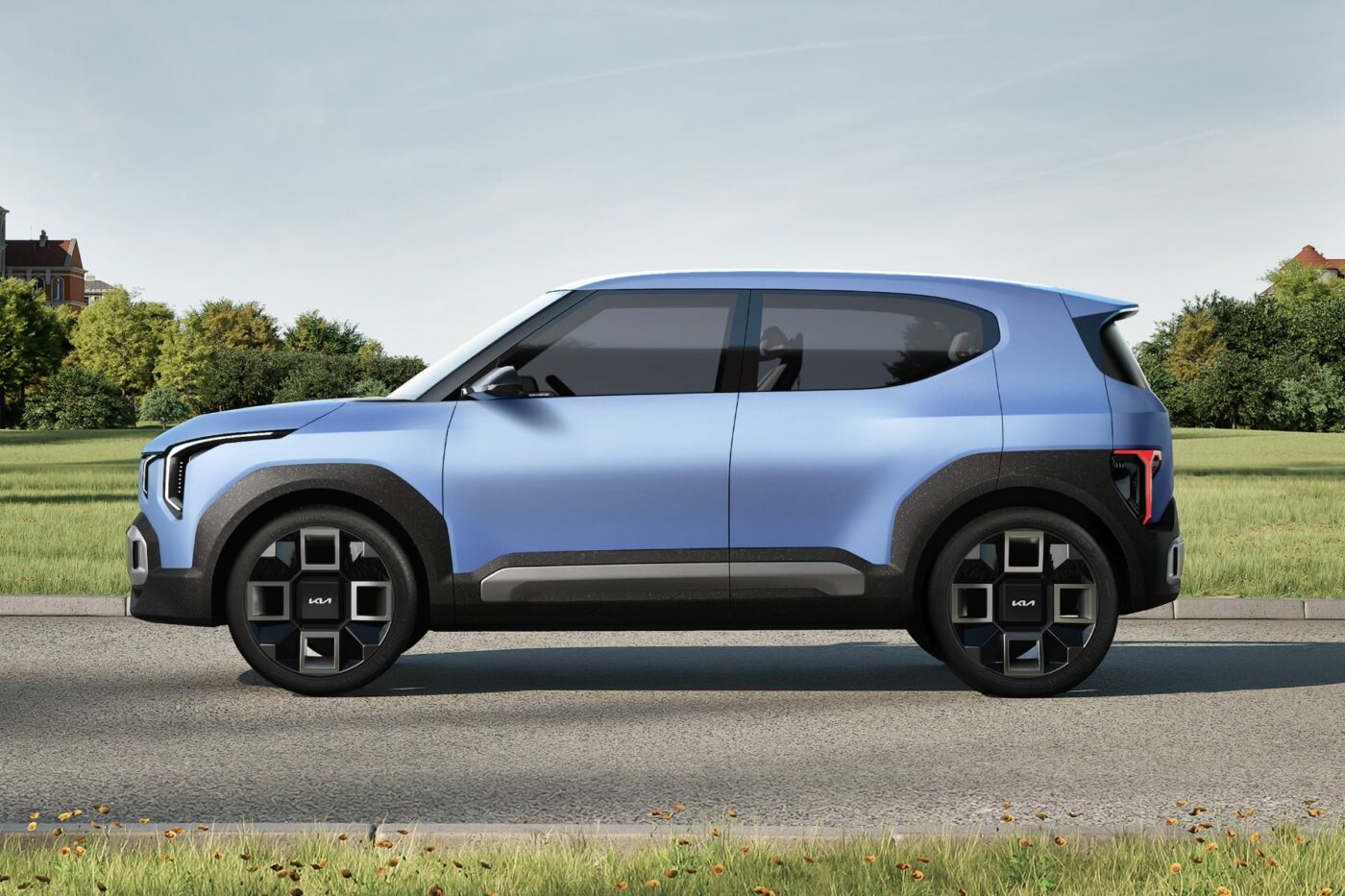
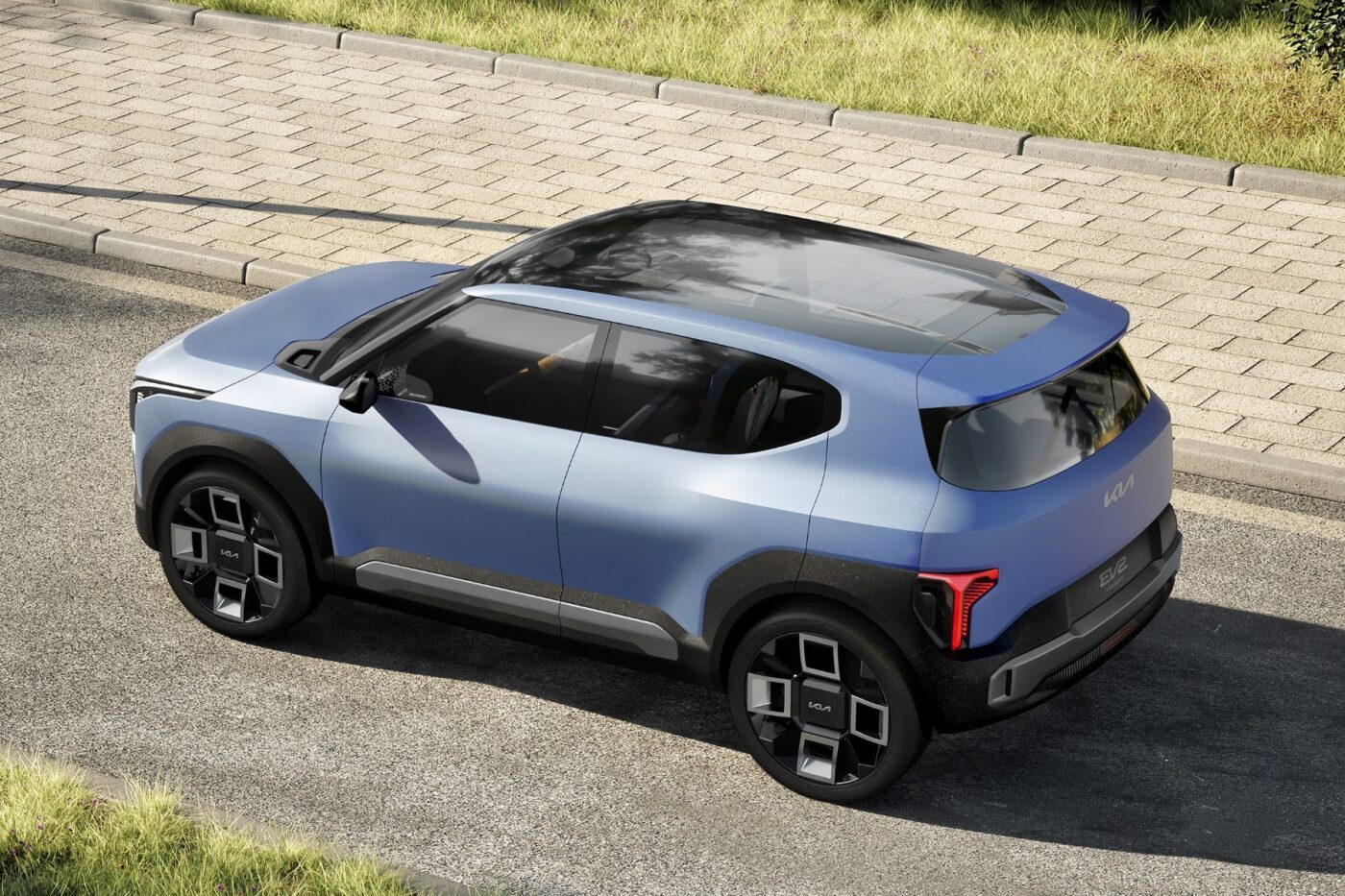
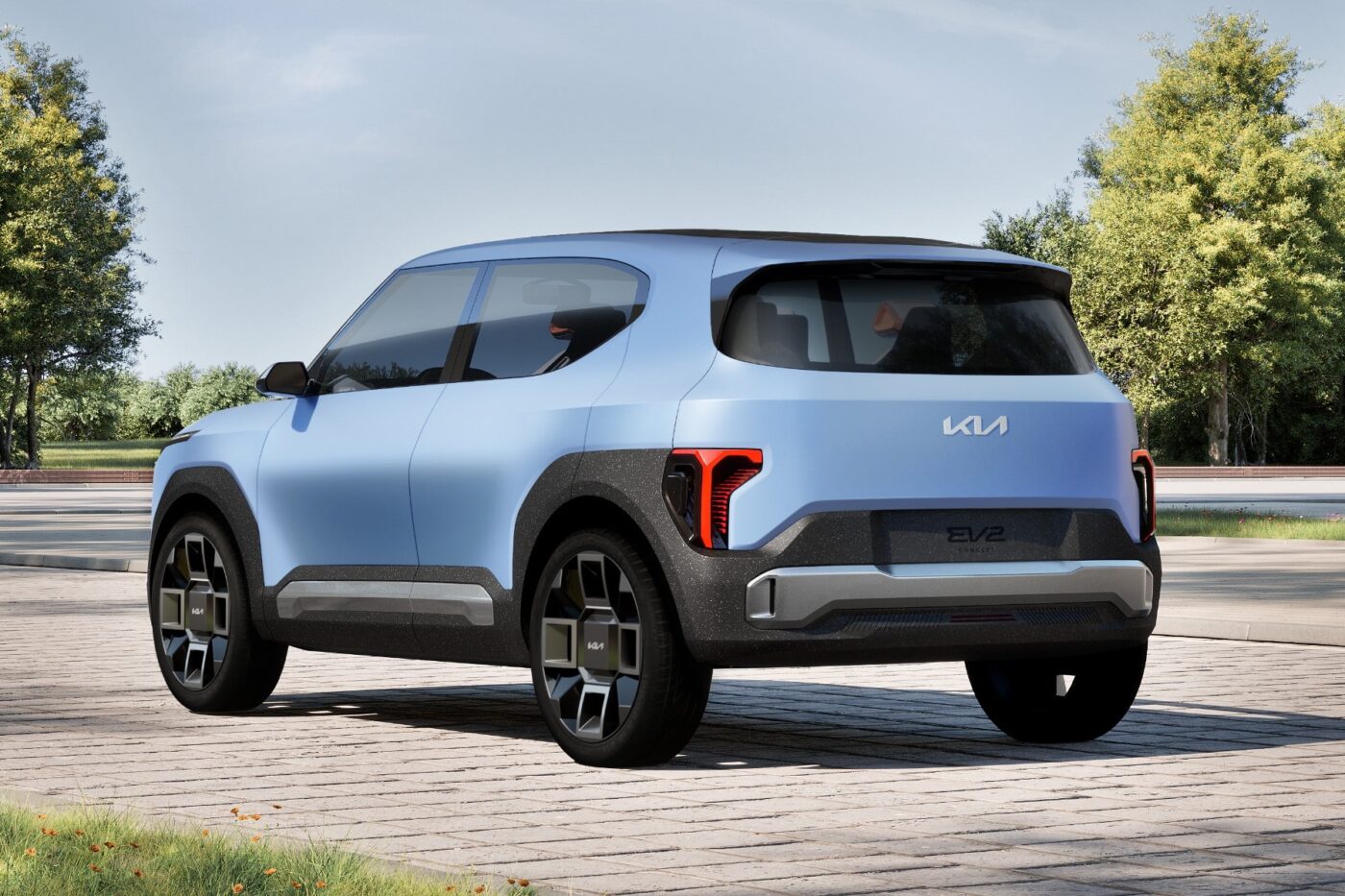
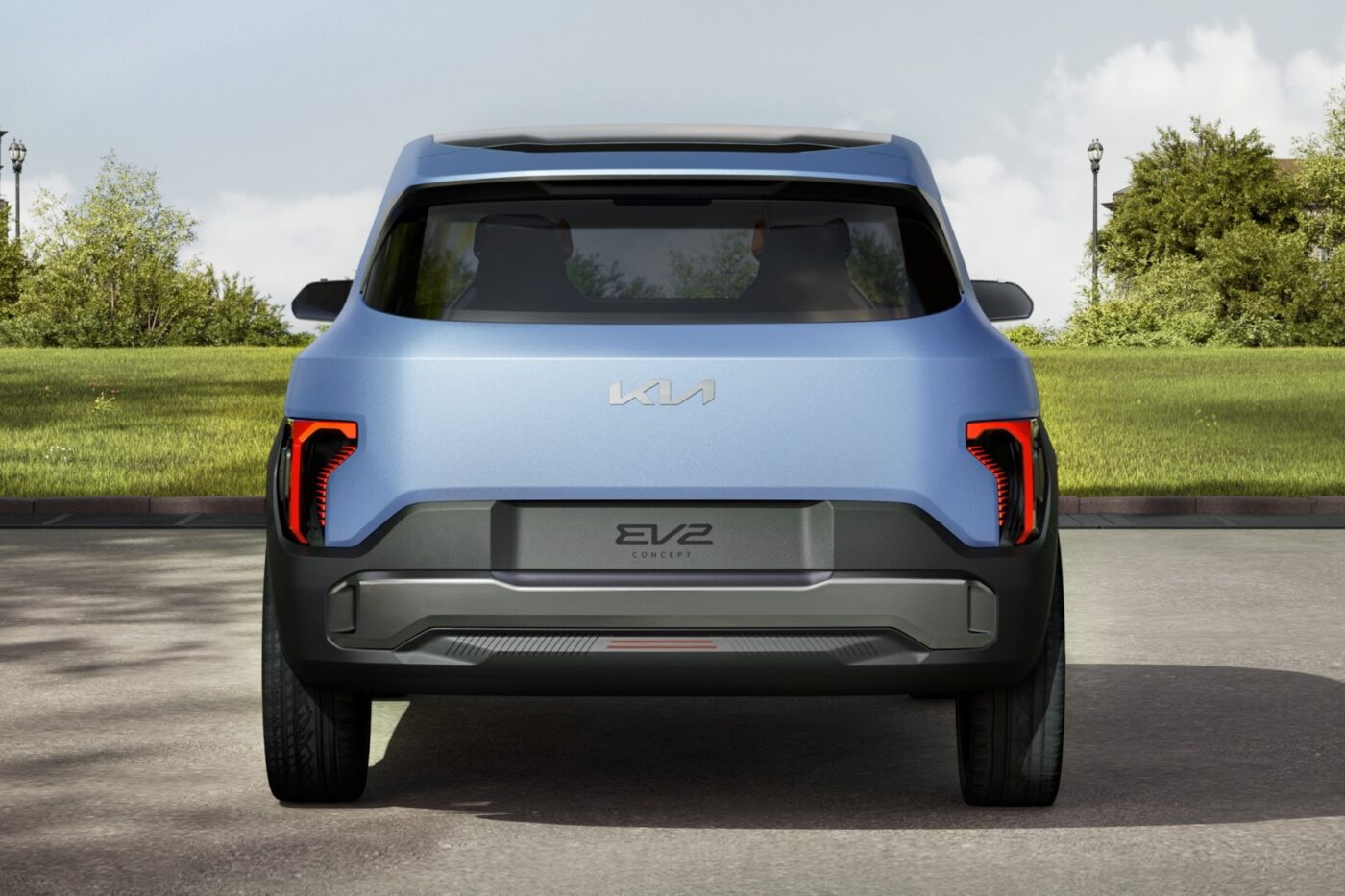

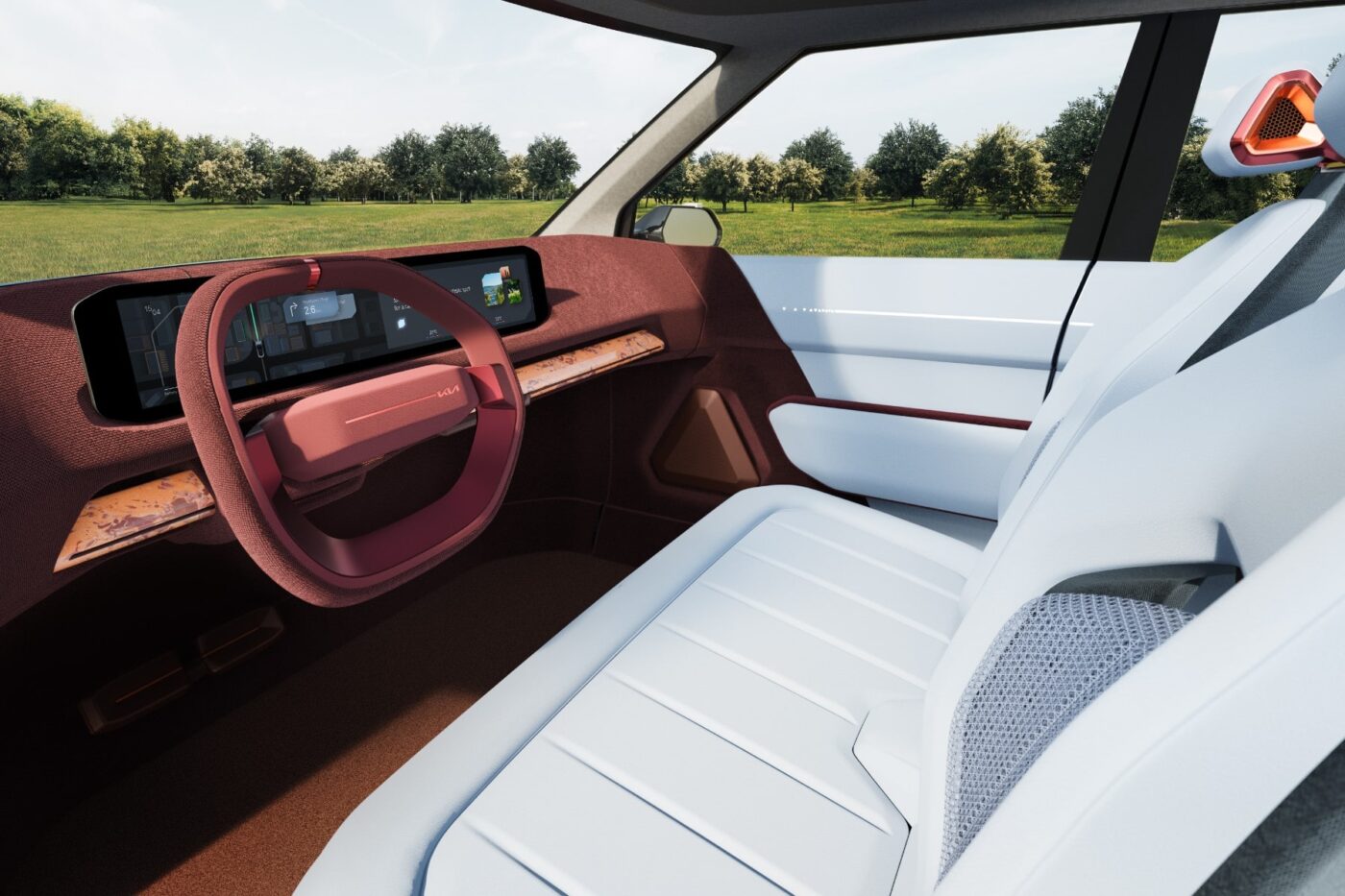
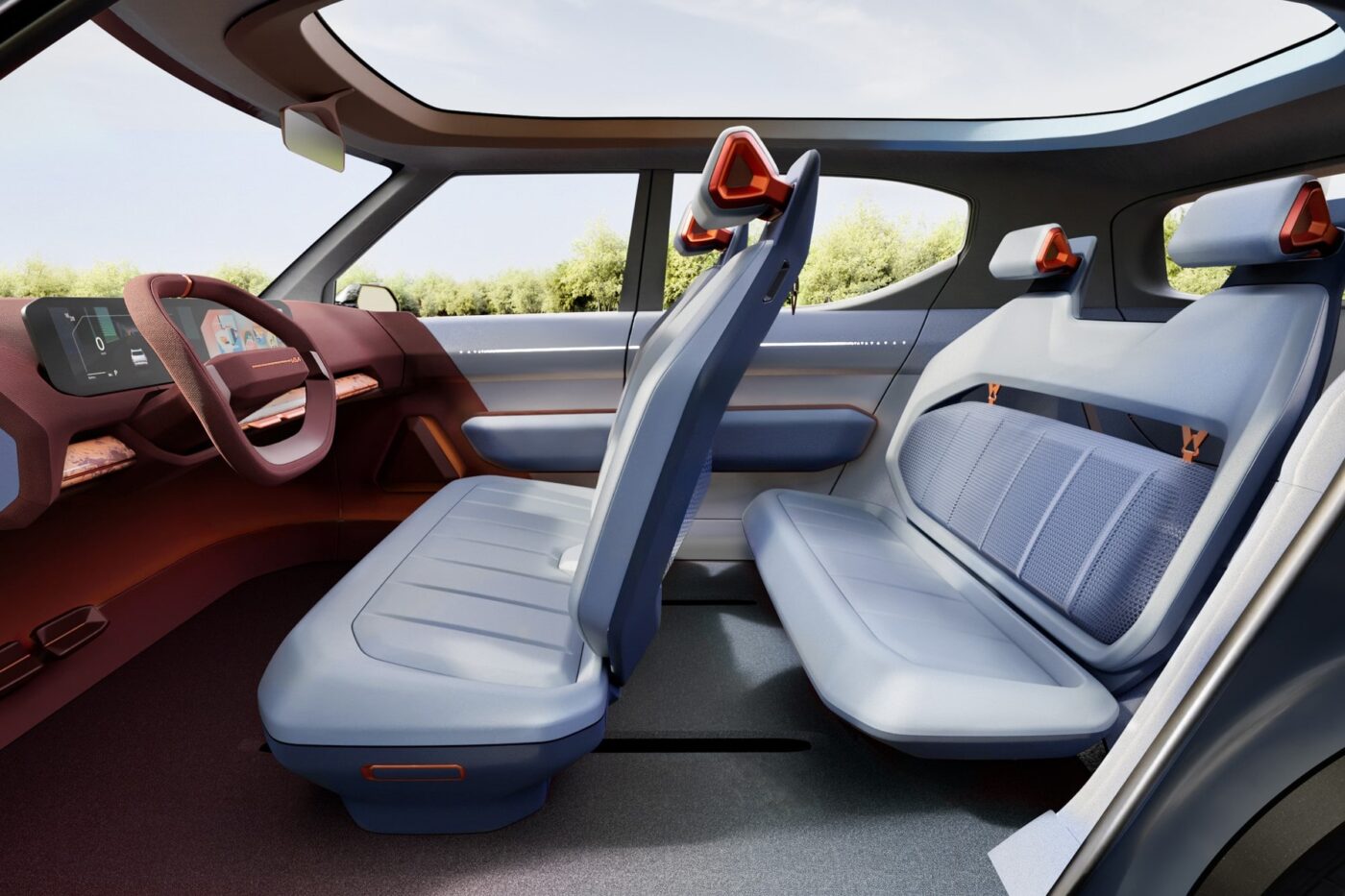
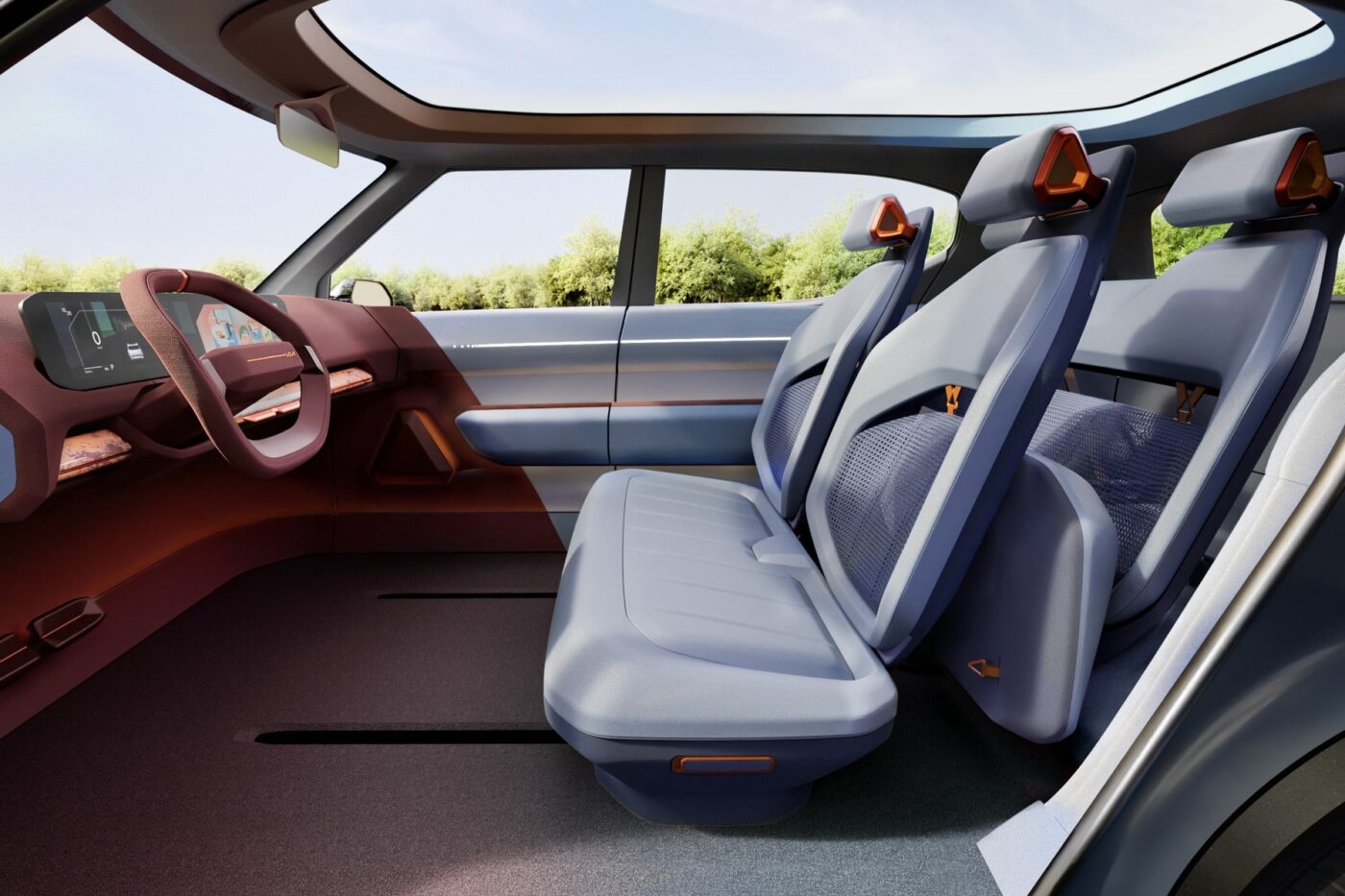
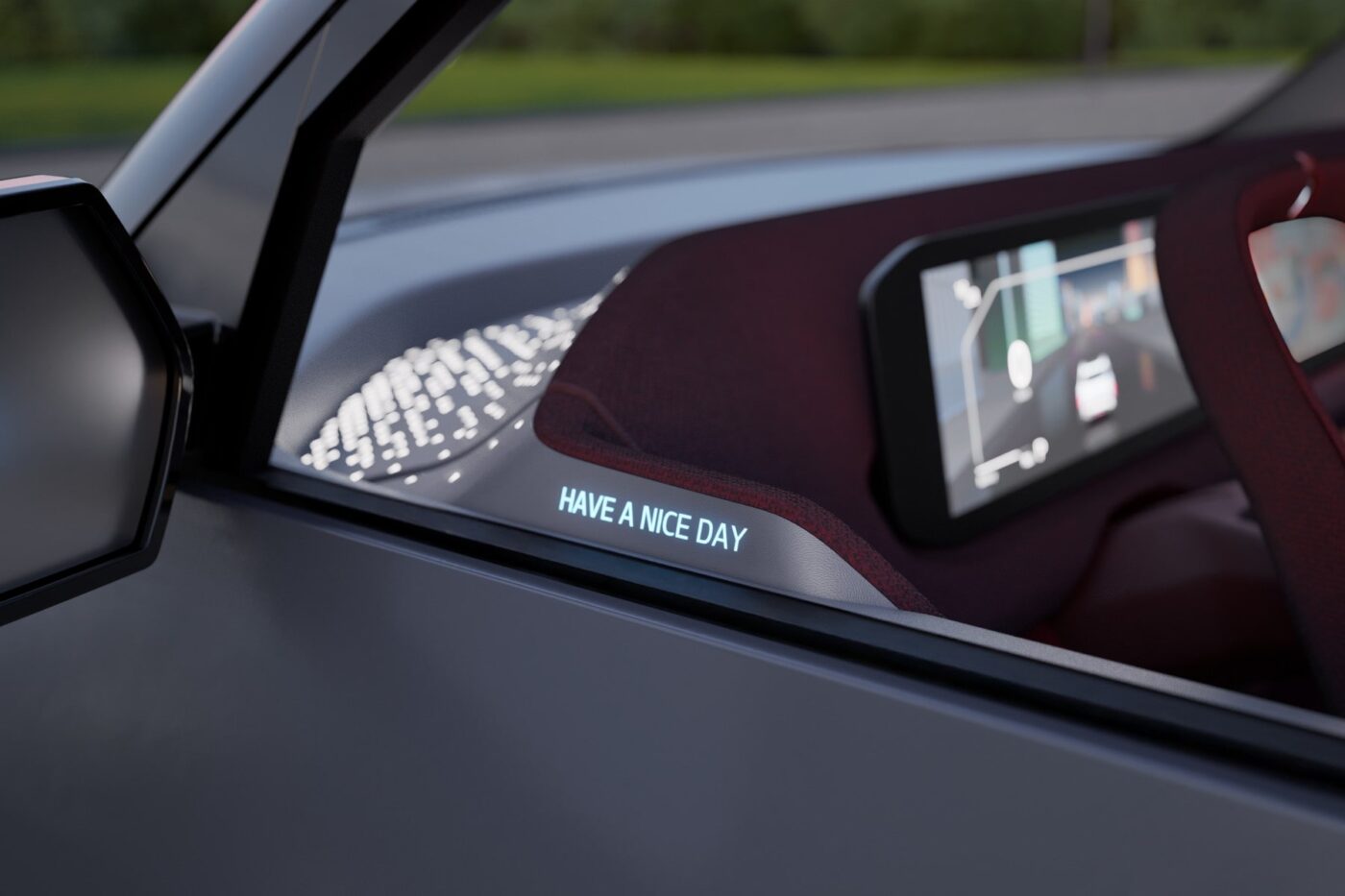
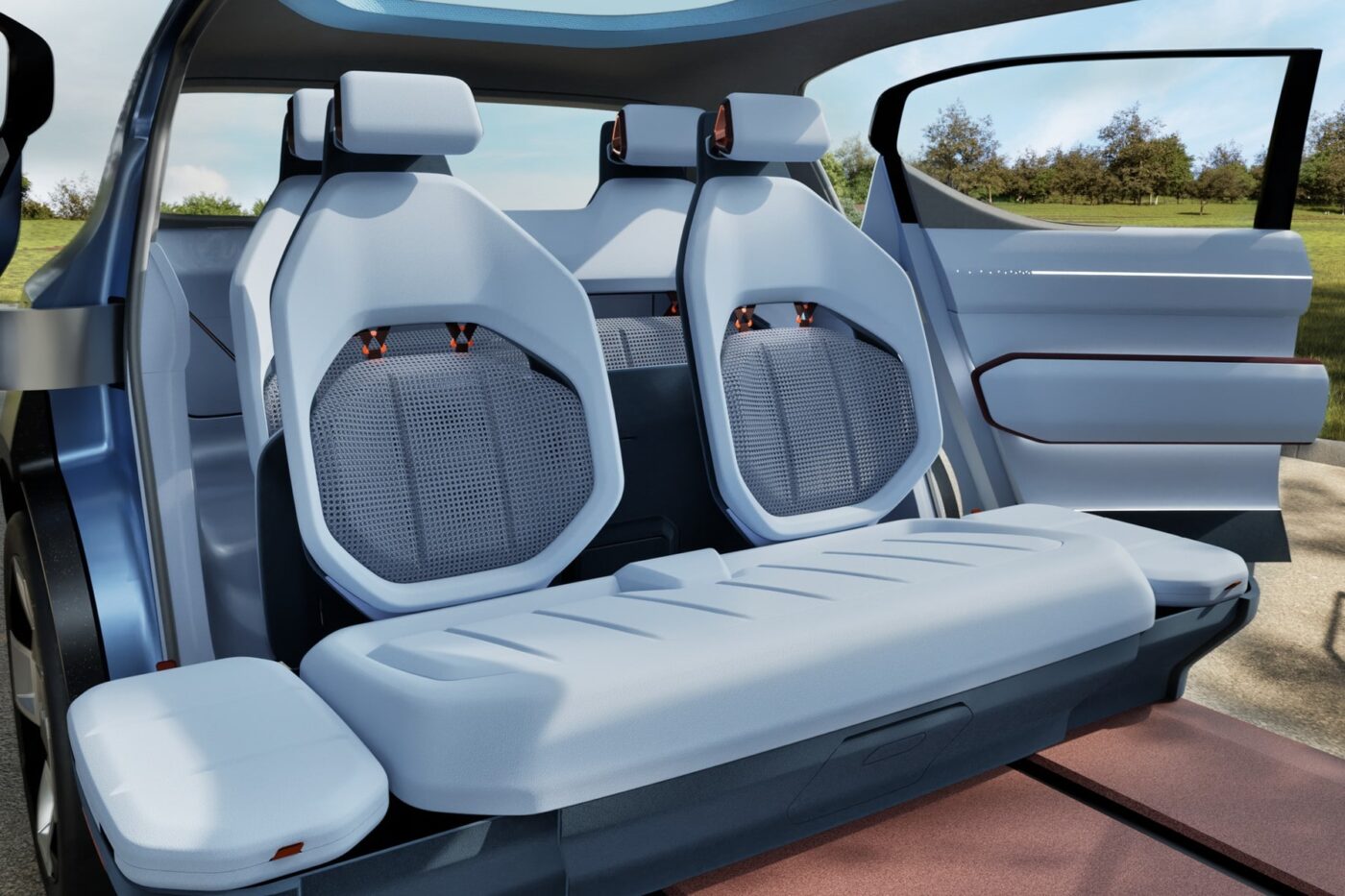
As usual for a study, the Koreans are holding back on technical data and instead focus on design and individual features. Elements such as the vertical daytime running lights and the emphatically robust bumpers should provide a glimpse of the (somewhat toned-down) series design, and the announced vehicle-to-load function and over-the-air updates can also be considered a given.
On the other hand, the counter-opening doors and floating bench seats are typical for a concept car, as is the steering wheel design. Inside, we can expect the familiar steering wheel and dashboard layout from the EV3 and EV4. According to Kia, however, the seating concept should be flexible and thus offer a high level of comfort and utility despite the compact dimensions. It is unclear whether the removable speakers from the door panelling will make it into series production.
On the other hand, the series specifications for the PV5, the first electric van in Kia’s PBV strategy (‘Platform Beyond Vehicle’), have now been finalised. The Koreans want to offer commercial users the right vehicles for their purposes thanks to a modular design and the necessary services.
On the vehicle side, it is now clear that the PV5 and the subsequent PV7 are based on the so-called E-GMP.S – a modification of the E-GMP known from the passenger car sector. It is a flat skateboard platform on which the flexible vehicle bodies can be placed – more on this in a moment. For example, the passenger version and the long cargo model are 4.70 metres long, 1.90 metres wide and high. The wheelbase is 3.00 metres.
There is a choice of two battery sizes with 51.5 and 71.2 kWh with NMC cells, which in the case of the PV5 Passenger should be sufficient for a range of up to 400 kilometres (i.e. with 71.2 kWh). For the PV5 Cargo, there will also be the option of a 43.3 kWh battery with LFP cells if, for example, delivery services are only travelling in a defined area and do not require a larger battery for long distances. As Kia specifies a charging time of 30 minutes from ten to 80 per cent, it is evident from the EV4 that this is the platform’s 400-volt technology. However, unlike the passenger car models, Kia states that this is a ‘cell to pack’ battery system – the cells are integrated directly into the battery pack without going through the modules. A 120 kW electric motor with a maximum torque of 250 Nm drives the front wheels.
| PV5 Passenger | PV5 Cargo | |
|---|---|---|
| Drive | FWD | FWD |
| Power | 120 kW | 120 kW |
| Torque | 250 Nm | 250 Nm |
| Battery | 51.5/71.2 kWh | 43.3/51.5/71.2 kWh |
| WLTP range | up to 400 km | up to 400 km |
| Length | 4.695 m | 4.695 m |
| Width | 1.895 m | 1.895 m |
| Height | 1.899 m | 1.899 m |
| Wheelbase | 2.995 m | 2.995 m |
The Koreans did not provide any further data on the drive system. In any case, the modular body concept took centre stage at the premiere of the PV5. The ‘Flexible Body System’ developed by Kia is intended to enable the modular assembly of body components, “akin to assembling a puzzle.” That means not only standard models such as the cargo van, passenger van, and chassis-cab can be offered cost-effectively, but also a family version and a ‘WAV’ (Wheelchair Accessible Vehicle). Conversion models such as crew cab, drop side, box van, freezer box and light camper are also possible with the chassis.
The PV5 Passenger for (commercial) passenger transport will be made available at the start. The rear seats can be flexibly folded down or removed. Kia emphasises that the vehicle’s “open-source platform is designed to facilitate the installation and use of various accessories, significantly enhancing passenger convenience.”
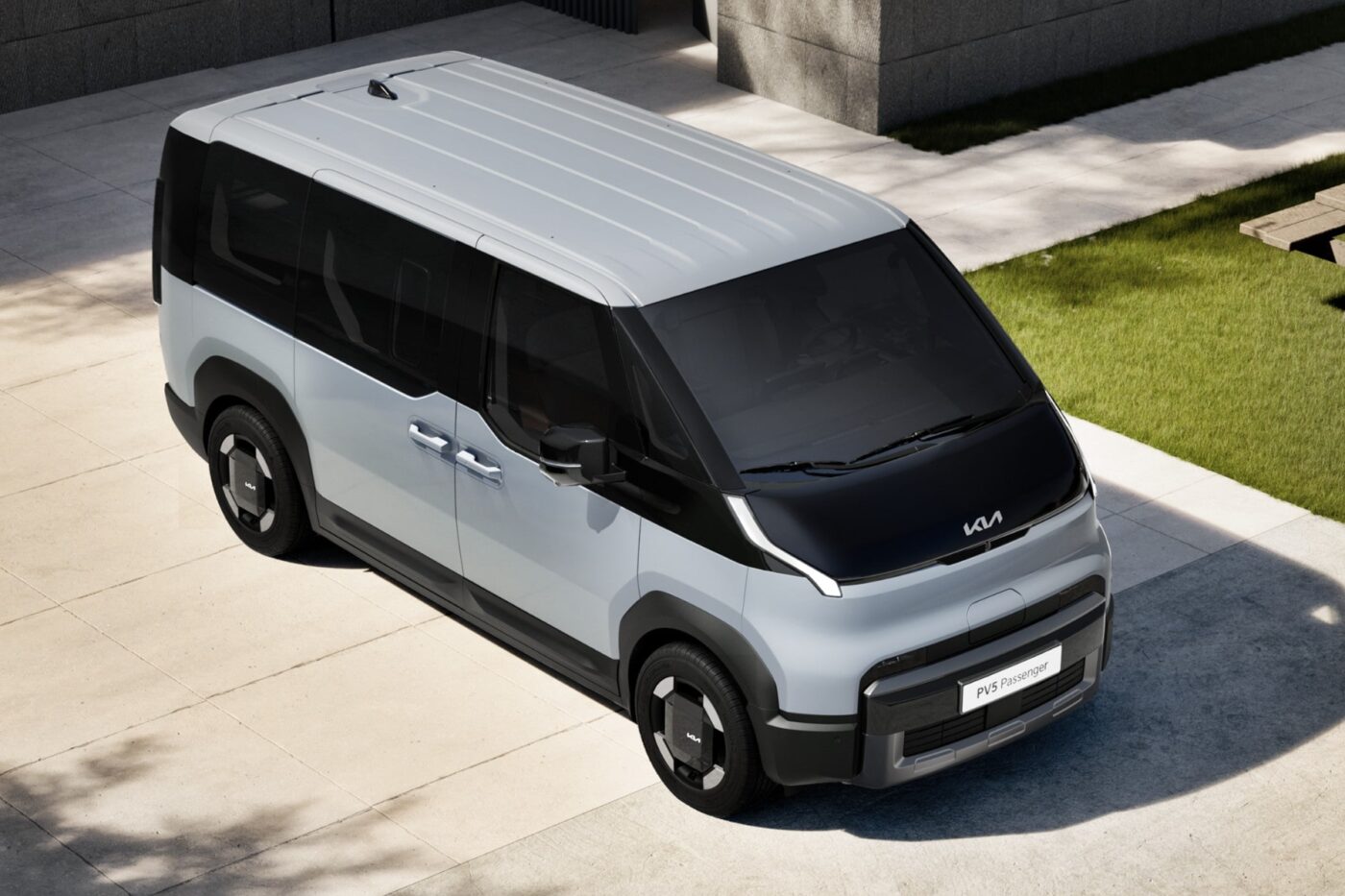
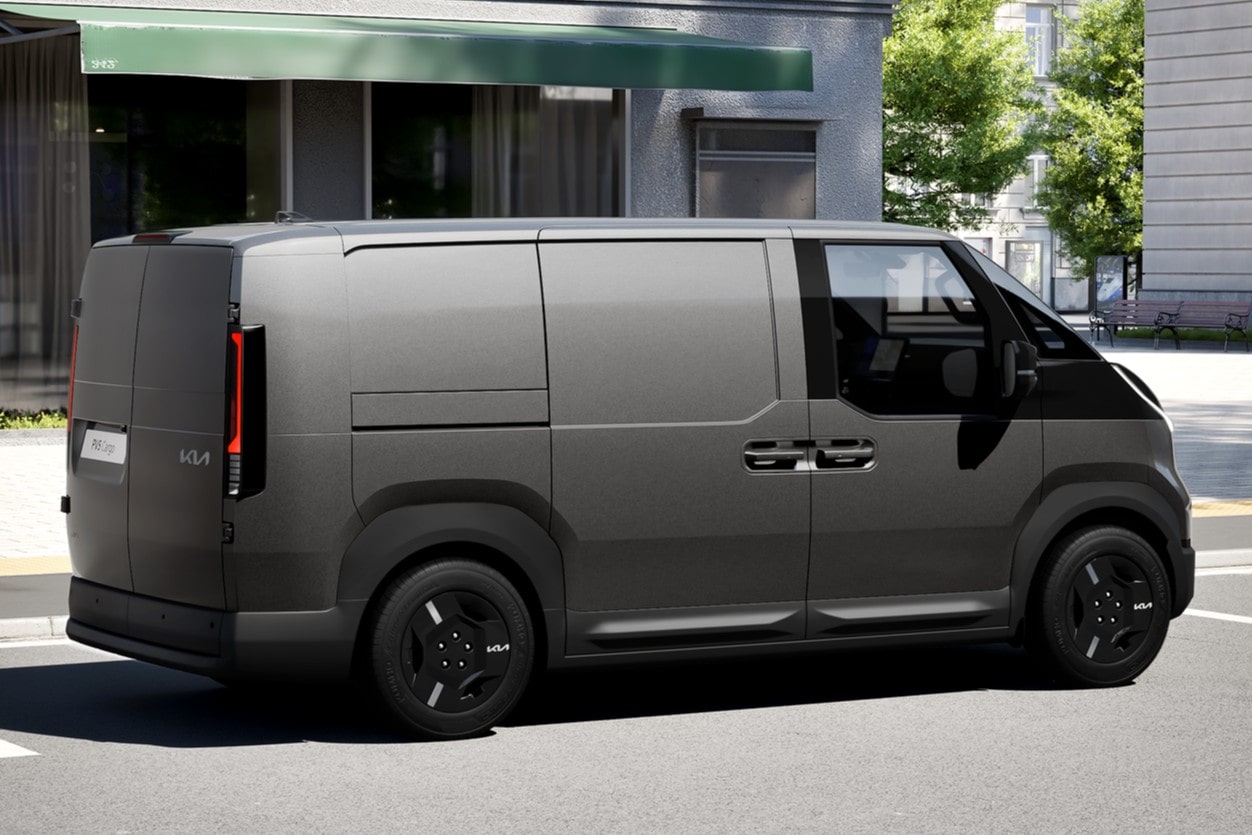
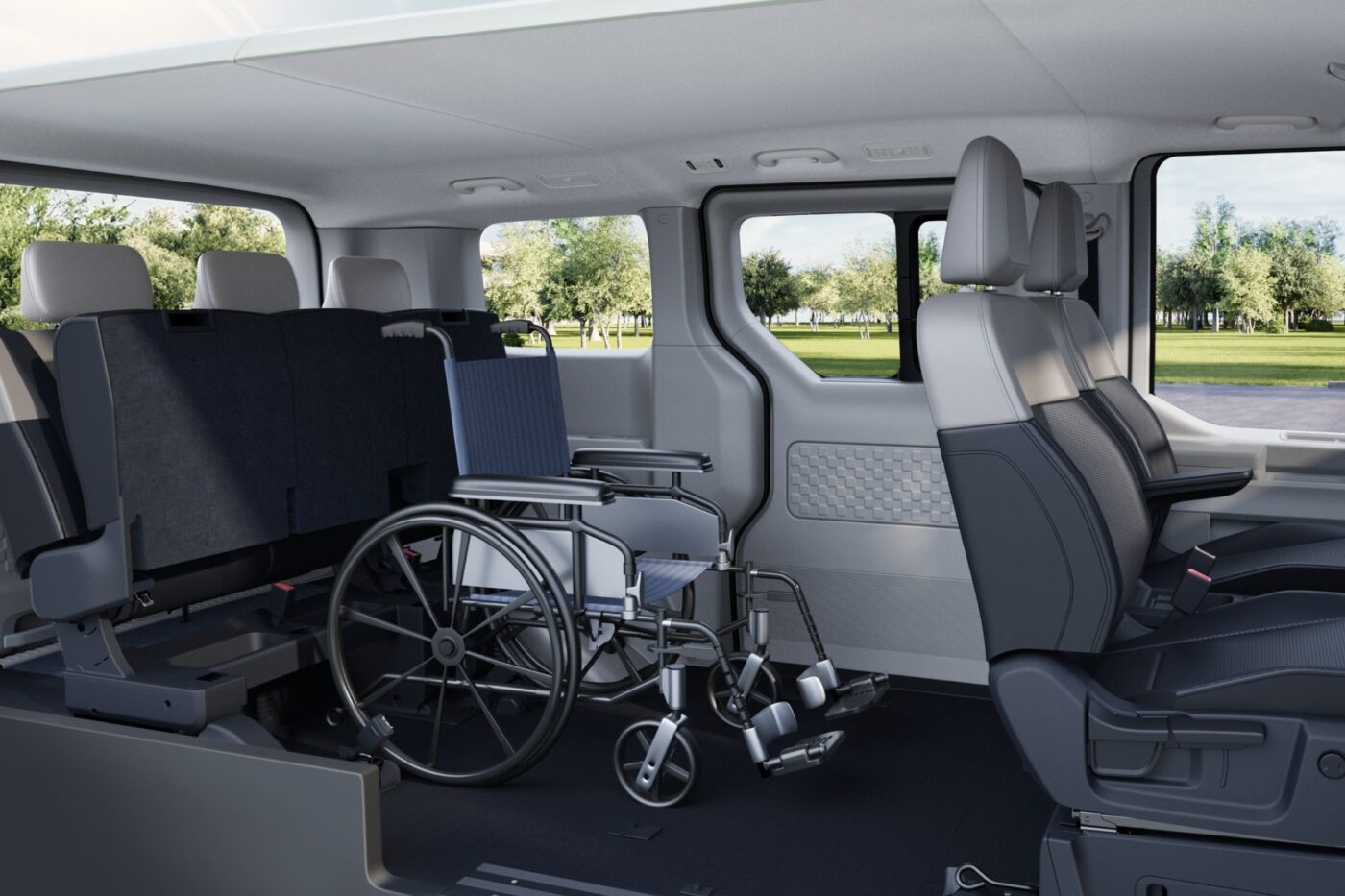
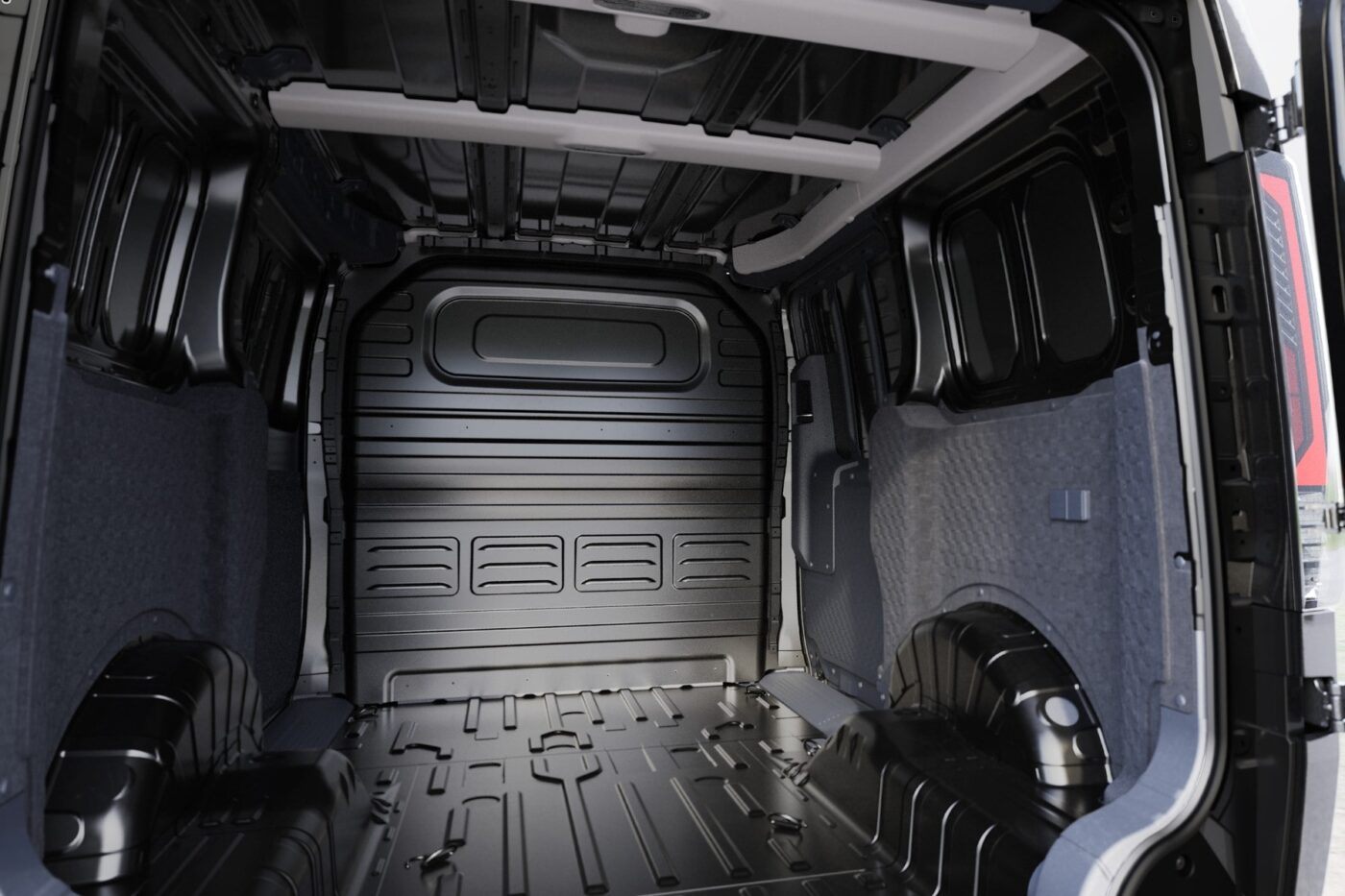
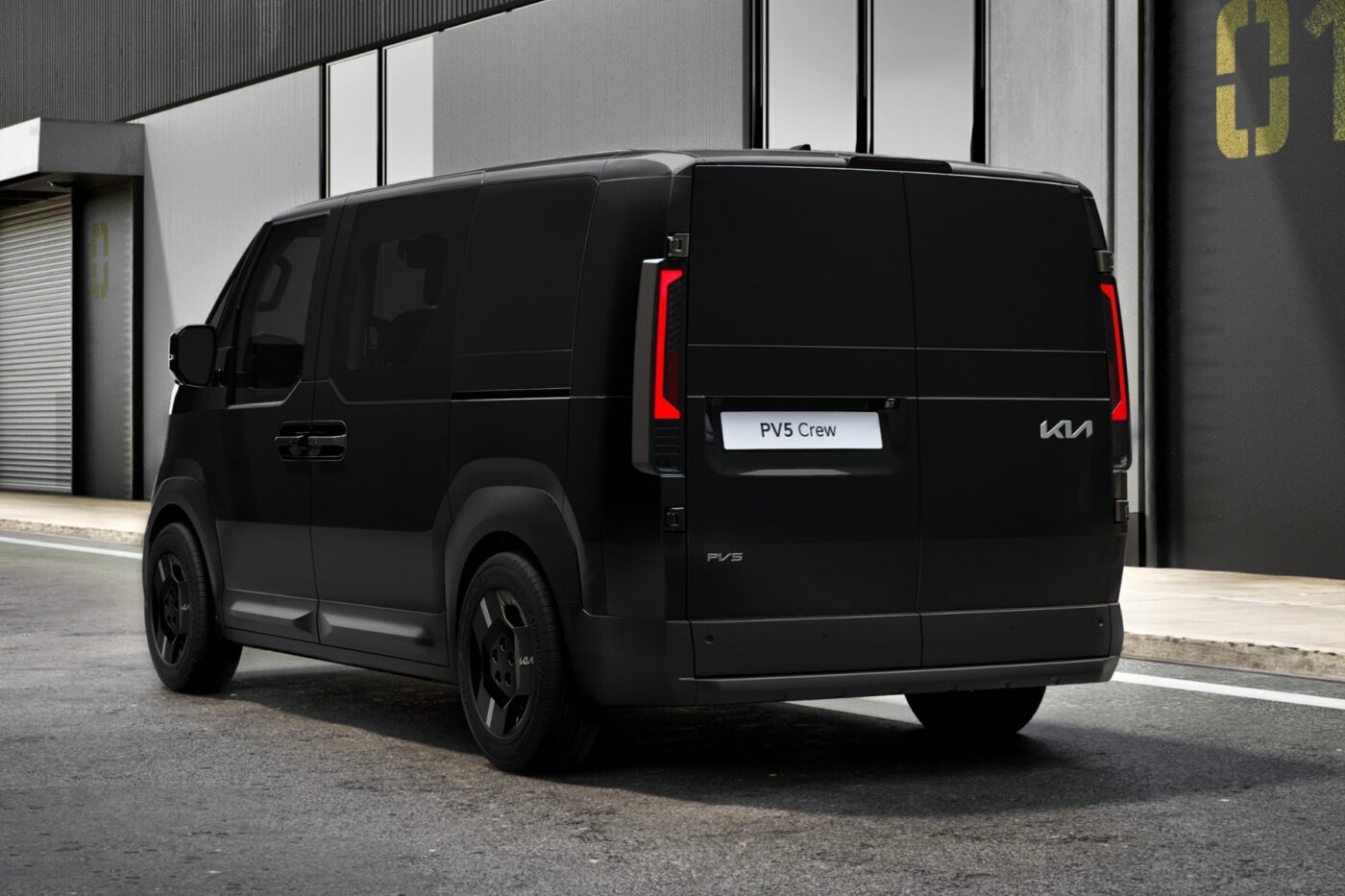
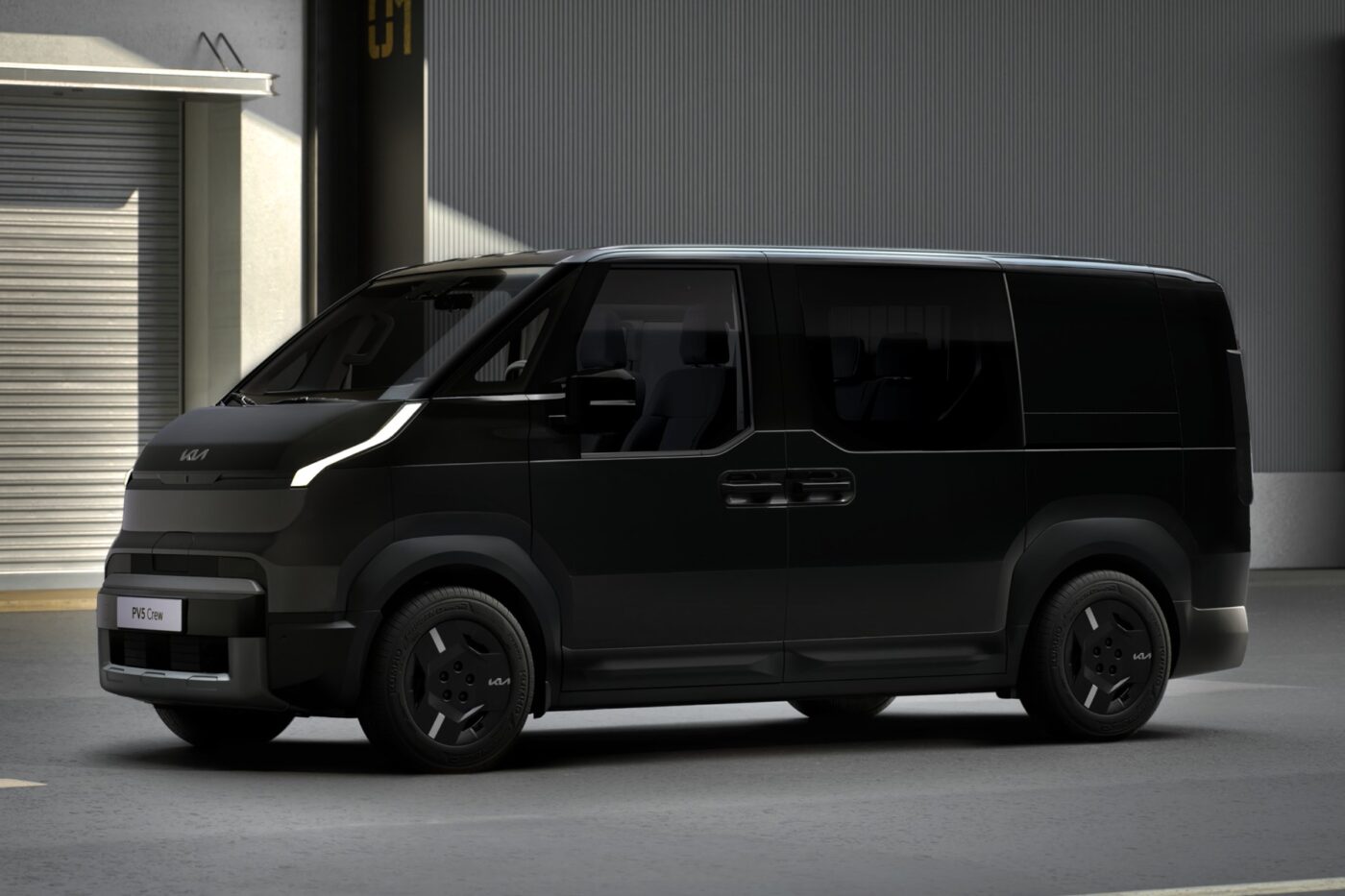
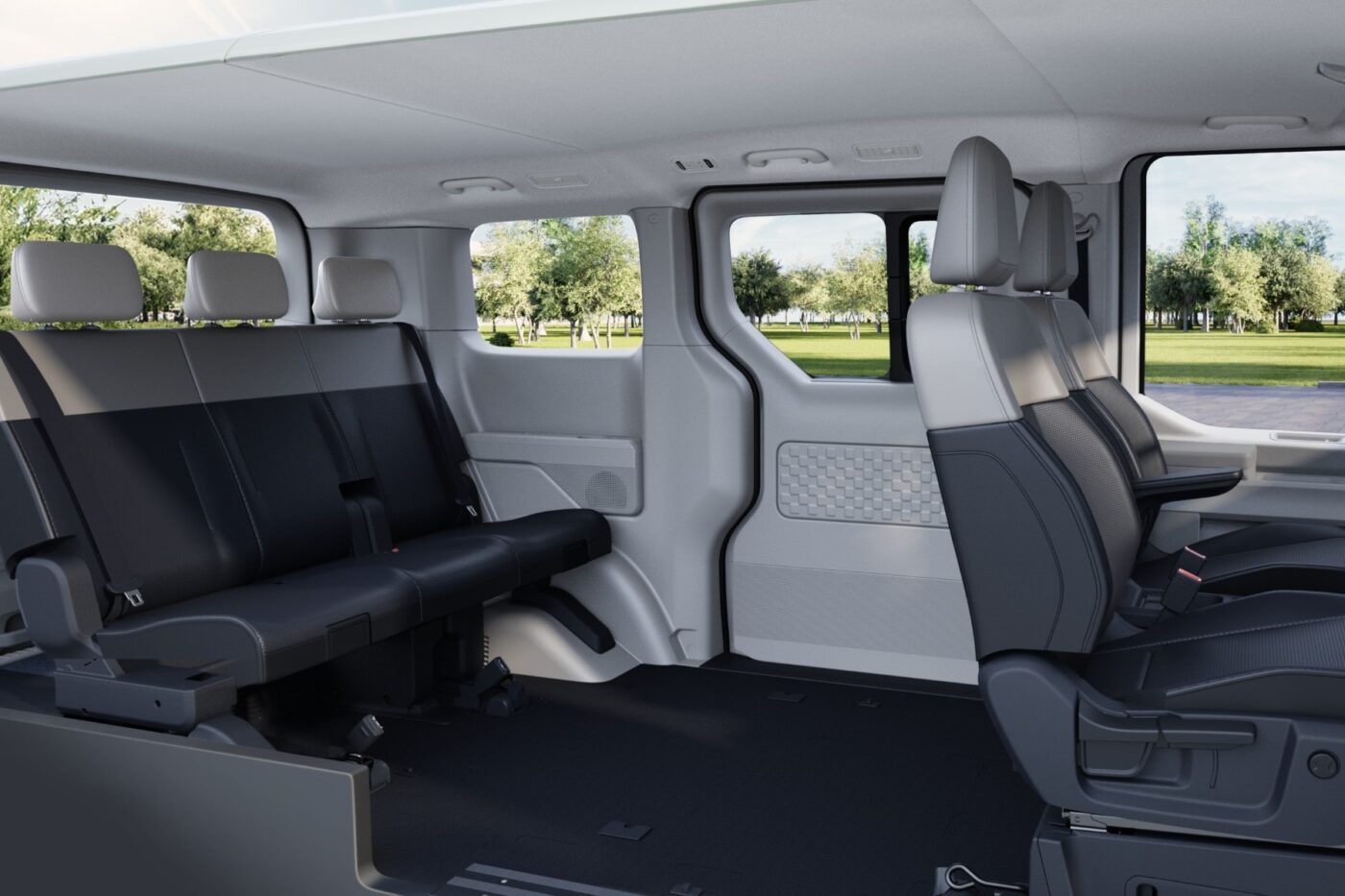
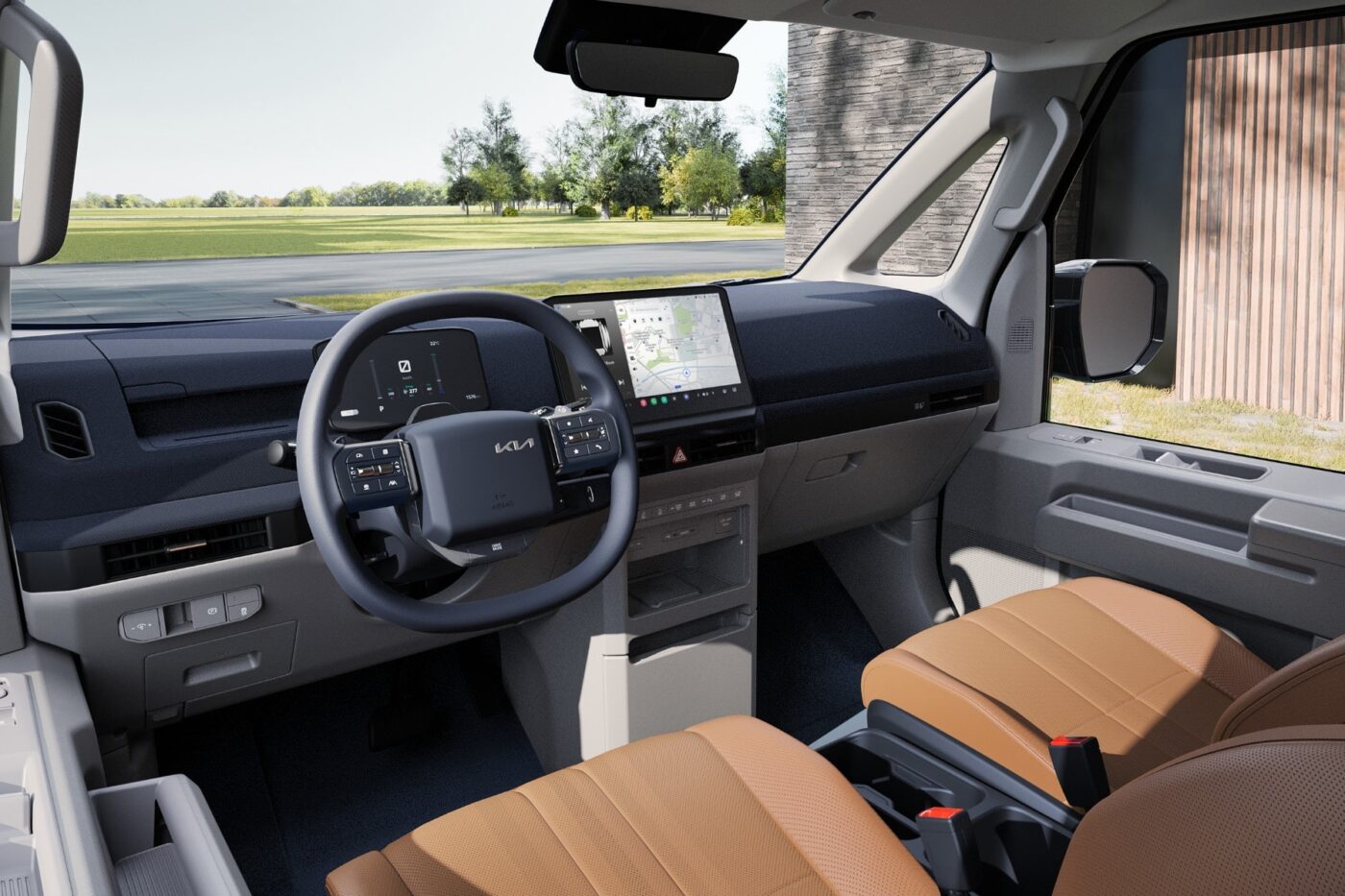
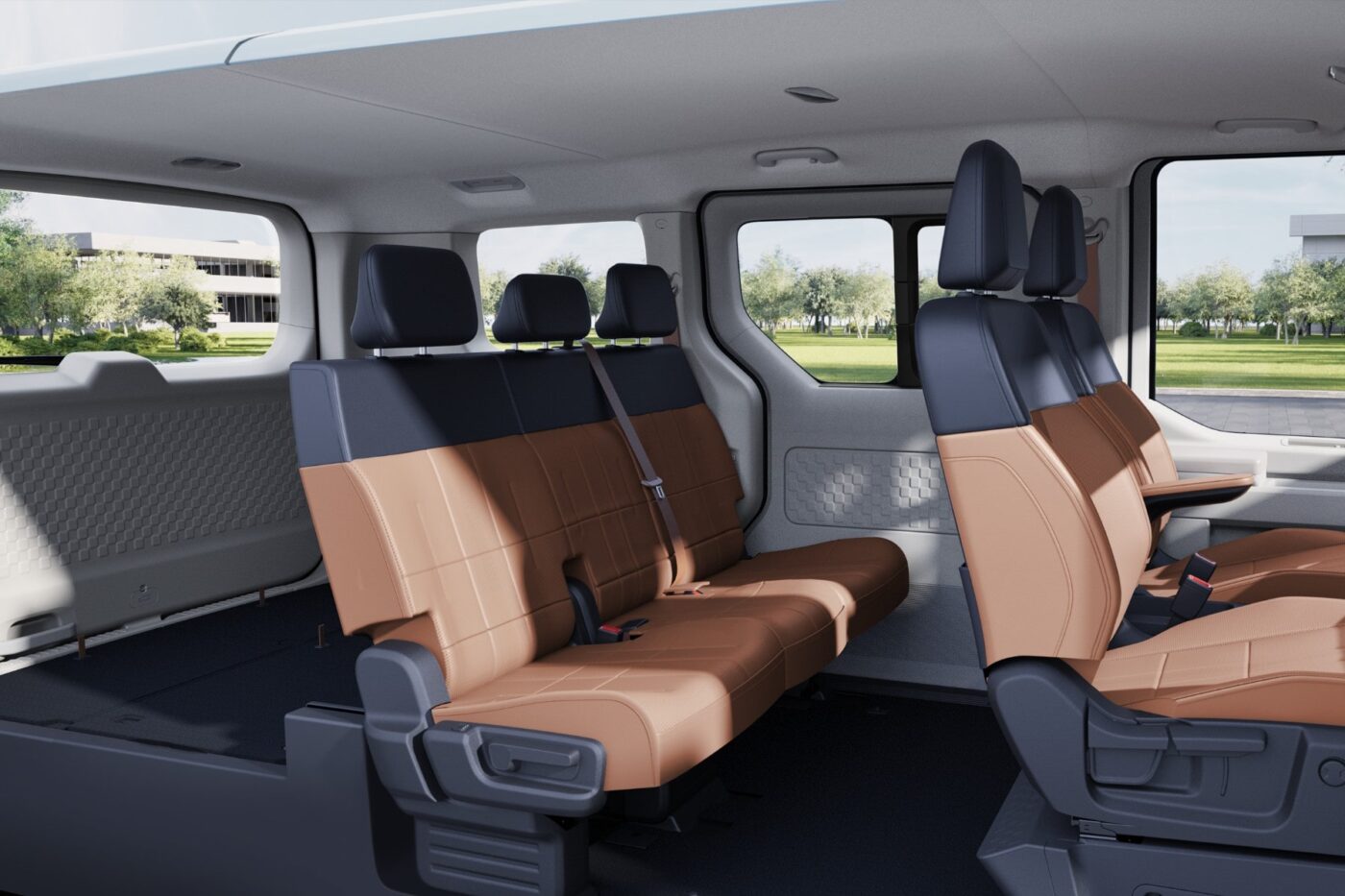
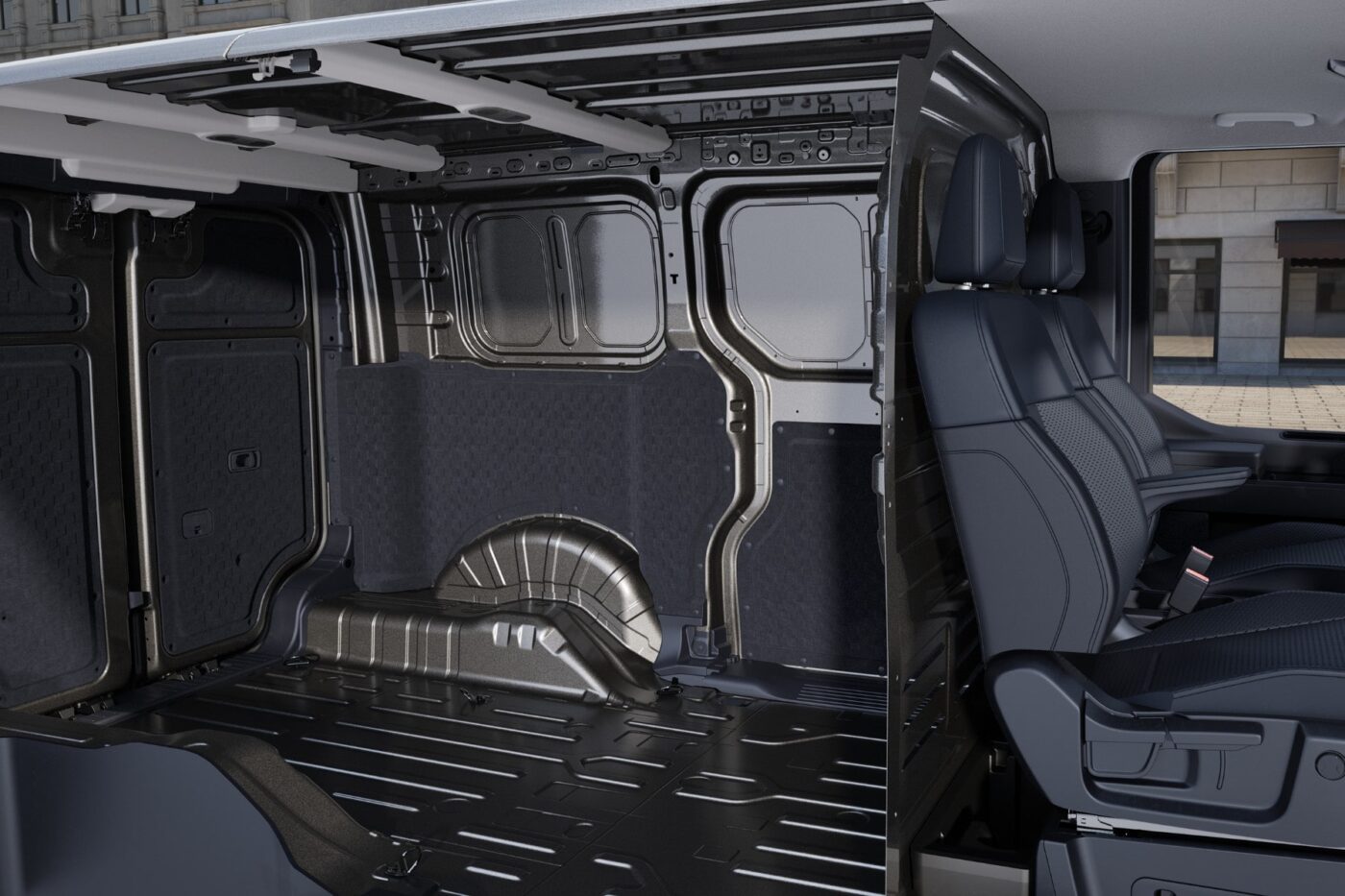

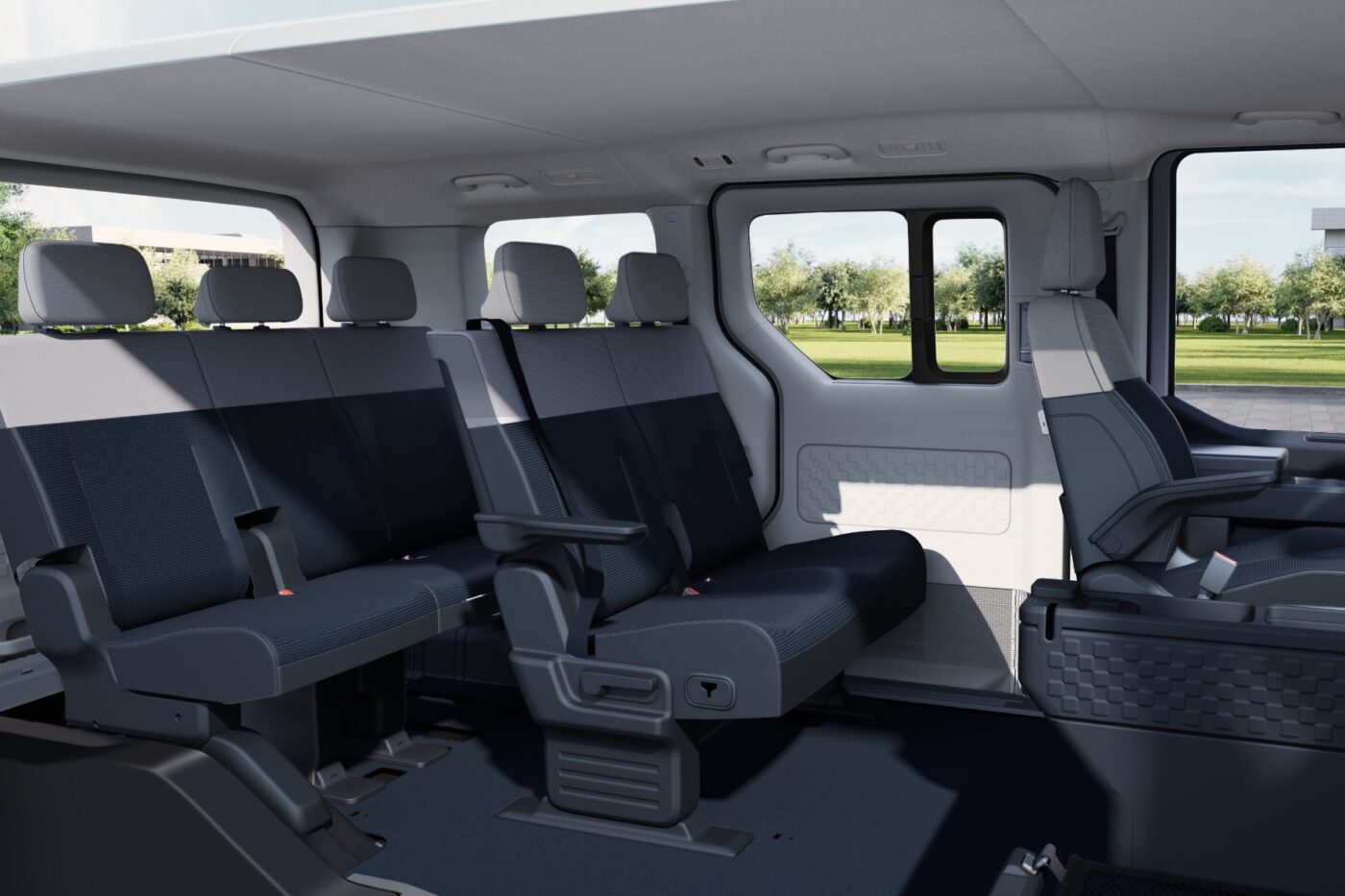
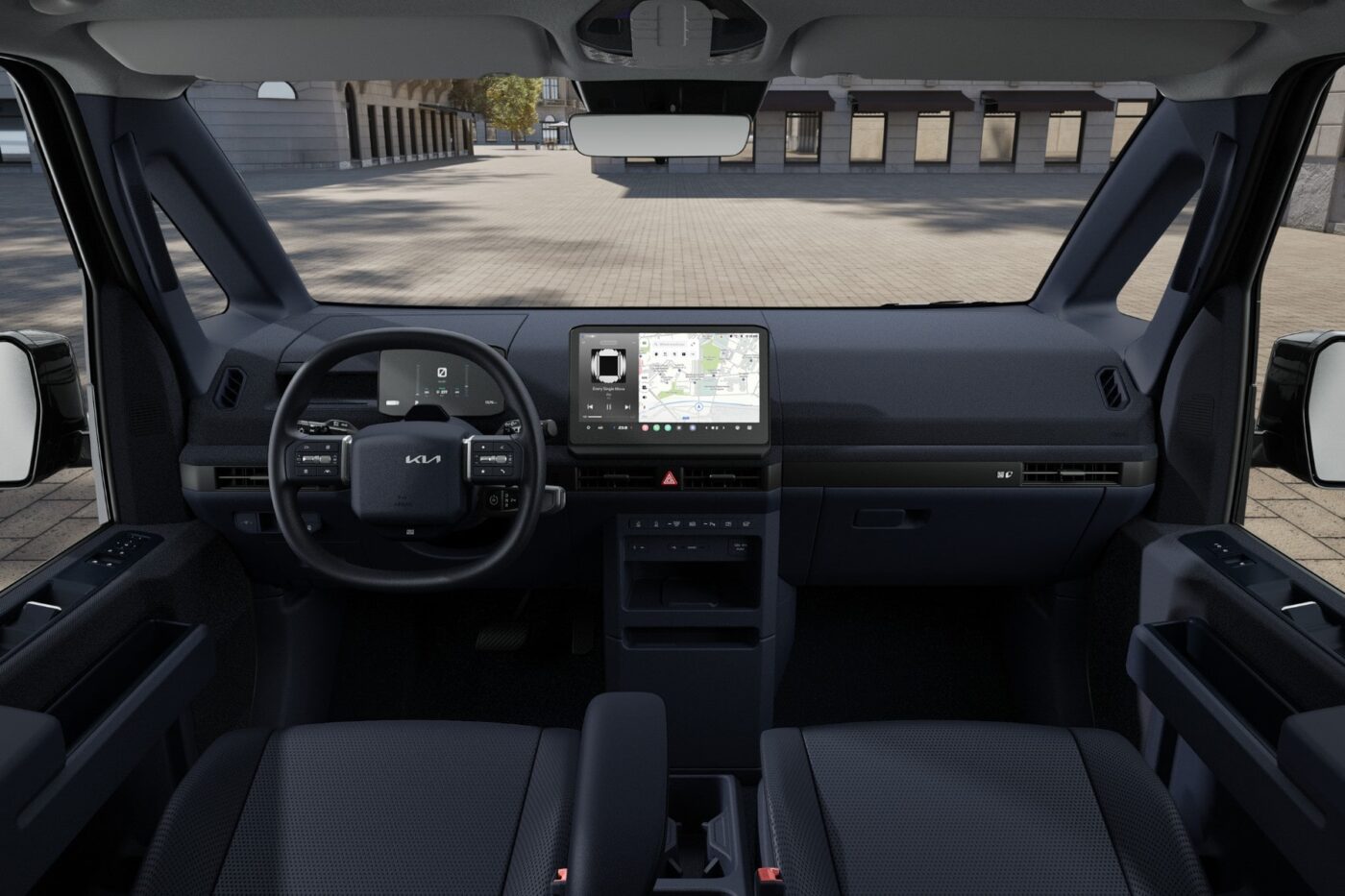
The PV5 Cargo will initially be offered in three specifications: Standard, Long and High Roof – the latter has the eponymous storage space of 5.1 cubic metres. The standard and long versions are offered ex works as two-seaters, three seats in the front are available as an option and are standard with the high roof. A walk-through version is also available as an option for the two-seater variants, which offers a sliding door to the load compartment for delivery services, for example – something that is usually only available in larger vehicles.
“Kia EV Day shows our vision for a sustainable future where electric mobility is accessible to all,” said Kia President and CEO Ho Sung Song. “The EV4 embodies that vision perfectly as a statement of our commitment to innovative design, cutting-edge technology, and a connected driving experience that excites and inspires. The EV4 marks a significant step forward in our electrification journey, offering advanced technology and a choice of body styles for drivers seeking a seamless transition to electric mobility.”
kianewscenter.com (EV4 and Concept EV2), kianewscenter.com (PV5)

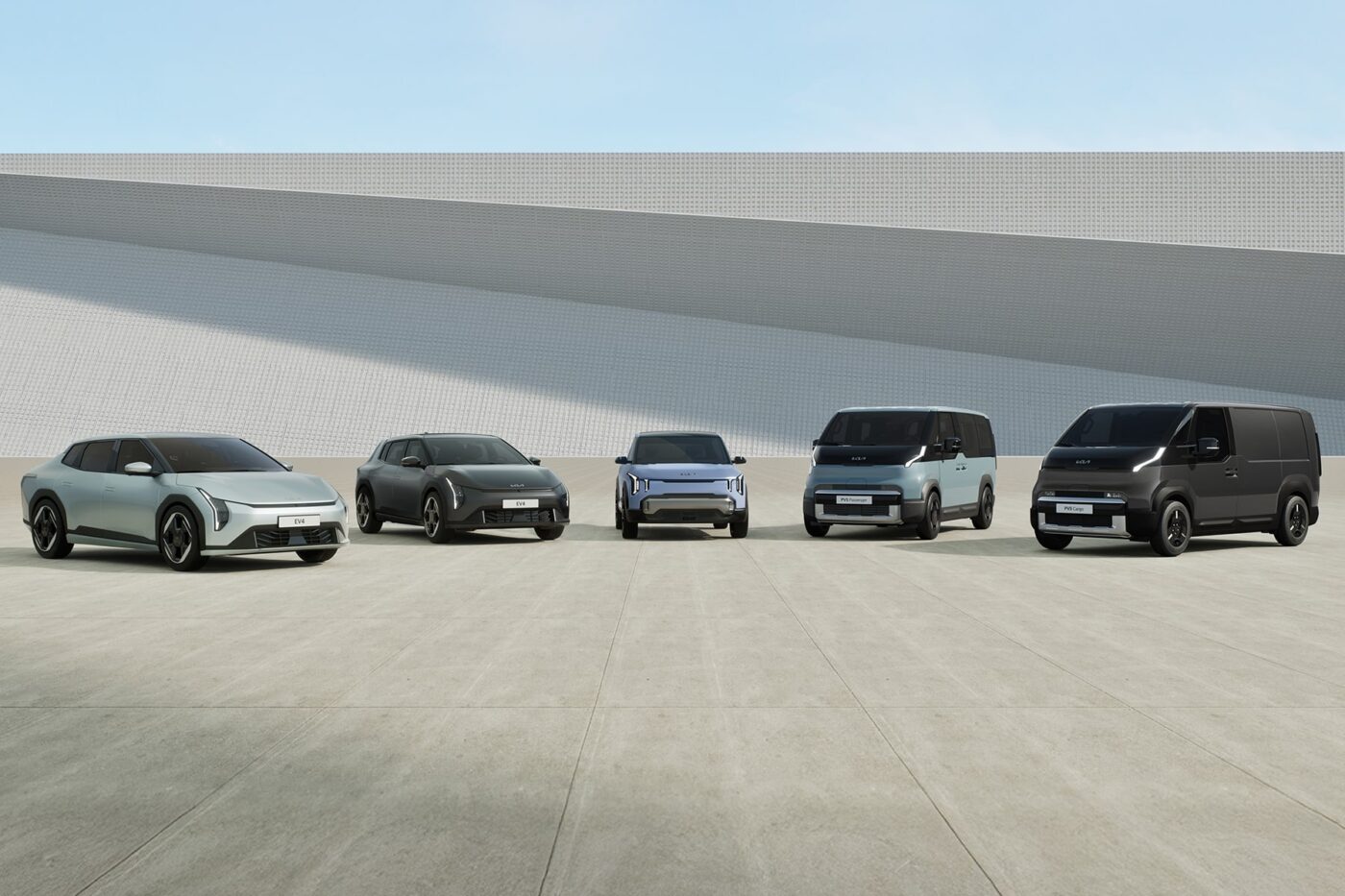
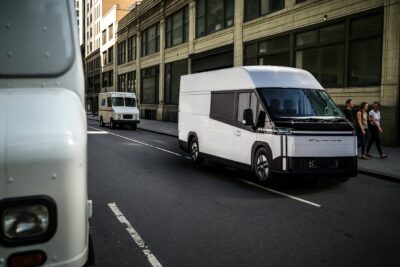

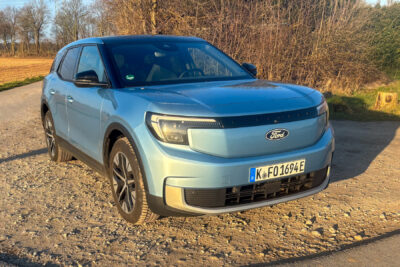
0 Comments